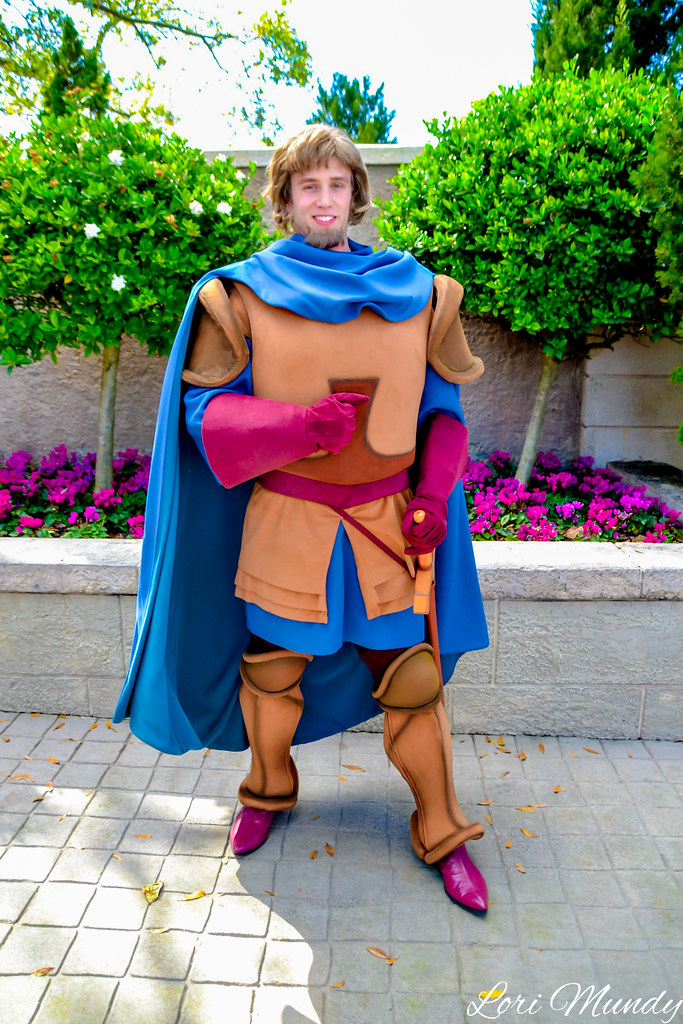We shall begin our sojourn through EPCOT Center with a ride on Spaceship Earth. I'll save the Entrance Plaza for the next post; because I want to talk about both the Entrance Plaza and Future World Central in one post.
--------------------------------------------------------------------------------------------------------------------------------------------------------
Spaceship Earth takes you through the historical and cultural progression of the world, showing how the world has evolved through communication. The attraction dates back to the earliest periods of the cavemen, proceeding through many different eras and civilizations before arriving in the current one in which we live today. A major point that I want to address with the renovation of Spaceship Earth is the actual theme of the attraction. Ever since the 2007 refurbishment, the theme of the attraction has been the evolution of technology and ways to communicate, from the hieroglyphics in Egypt, to the Phoenicians developing the alphabet to the dawn of computer systems. The theme of the attraction has always been about the potential of communication, to branch out and to communicate across the world. I believe with the previous renovation, that was an aspect of the theme that was lost. It is not just about ways TO communicate, but rather HOW FAR we can. I want that to be a part of the attraction that is re-touched on.
In addition, the entire attraction will undergo several audio and vehicle repairs, to make sure that the attraction not only sounds as best as it could be, but that there is a fluid movement to the attraction, so that it is not as bumpy as it currently is. Speaking music-wise, Edo Guidotti’s acclaimed score for the 1994 incarnation will be restored. Also, the use of the video screen technology is going to be heavily toned-down. The entire descent down of Spaceship Earth will no longer utilize the video screen technology. Instead, the video screen will operate as a timeline as the vehicles travel through the attraction. As the vehicles reach each new era, it will display the approximate year and location on earth of where the events we see in the attraction actually happened in real-time. I know that the addition of video screens is one of the things that many people disliked about the recent refurbishment, so this may be a way to utilize the video screen technology in the attraction, without it being an entire centerpiece, as seen in the finale, which will be completely revised.
Most of the ascent will be the same; so watch the video above, mute that condescending Dench narration, blare that Guidotti score, and let's go!
ANNOUNCER: On behalf of EPCOT Center, welcome aboard Spaceship Earth. Journey with us now as we travel through time to explore the fascinating history of human communication.
The vehicle enters a dark tunnel and rises sharply upward. A starfield appears and we hear soundbites from famous people such as Susan B. Anthony's "We ask equality be guaranteed...", JFK's "Putting a man on the moon," and FDR's famous line, "The only thing we have to fear is fear itself." Along the walls, light surges up colored "wires" towards the top of the tunnel. As we near the top, we see a projection of purplish clouds and an occasional lightning bolt as we hear the ride's narration begin.
NARRATOR: Like a grand and miraculous spaceship, our planet has sailed through the universe of time. And for a brief moment, we have been among its many passengers. But where did we come from and where were we going? In the dust from which we were formed, the walls of time have recorded the answers to these questions and so many others. And from the very beginning with our ancestors, we have always wanted to reach out to each other... to bridge the wide gaps between us... to communicate.
Once at the top of the tunnel, we see animated projections of Neanderthals fighting for survival without a sense of communication and language. We then enter a cave and see a Shaman, or medicine man, with a fur cape and antlers on his head. Two men sit around the fire listening to the Shaman. His large shadow is reflected by the fire onto the cave wall. A woman is also listening while working with a fur. On the far right wall, a man and a woman are painting a message on the wall. The drawings are similar to those found in the Salon-Niaux cave in Ariège, France, circa 10,000 B.C. Sounds of animals growling echo through the caves.
Sweeping across a vast, lonely, hostile planet, our early ancestors had set out in every direction, for they were intent on their search for food and shelter. With the development of speech came a very significant answer to survival. Now we could share and learn from one another. On the walls of caves, we inscribed our utmost victories, an increasing proof of our deeds to share with others so they too may greet tomorrow's sun.
Moving into an Egyptian temple, representing 1567 - 1085 B.C., a man on the left is making paper out of papyrus. On the right, next to an elaborate entrance to a building decorated with hieroglyphics, a man stands high upon scaffolding carving a ventilation hole near the top of a tower. Nearby, a man sits on a rock, pounding papyrus. Further ahead on the left, an Egyptian pharaoh is dictating a message as a scribe copies it onto the new paper. His wife is seated next to him while a servant fans them.
Within a few thousand years, the Egyptians created more walls, each of which covered in the first written form of communication: hieroglyphics, a multifaceted language of symbols and pictures. Now we could release our thoughts from carved walls and set them down on papyrus scrolls, the first form of paper. Pharaohs could now deliver declarations to subjects throughout the land.
In the Phoenician scene, 9th century B.C., two ships meet in the ocean to exchange goods. Another man on the larger ship, behind the smaller ship, holds a rope that is connected to the smaller ship so that both ships stay together. Fog surrounds the ships. Smoke rises from small fires in pots at both ends of the larger ship. To the right of us is a wall showing the ocean going to the horizon and stars above.
Then came the Phoenicians who not only helped institute the first means of trading goods to distant ports of call, but also created the first common alphabet and delivered it from one area of the Mediterranean to another.
Up next on the right is a Grecian school, circa 428 B.C. An elderly man teaches three young scholars.
In ancient Greece, the spoken word is elevated to a higher level of knowledge. With the help of new trade routes by land and sea, the Greeks realize the vital role math and science plays in aiding a powerful empire. Schools are opened, forums are established, and knowledge is spread throughout the empire.
Ahead on the left, a young Roman man holds the reins to a two horse-drawn chariot. The man, dressed as if he is in the Roman army, who arrived in the chariot is now exchanging information with another man dressed in a toga. The man holding the reins is standing on the ground with the horses, the army man is standing one step up, and the man in the toga is standing one step up from there on a marble platform. He is between four large columns, two on each side. Smoke rises from two small fires in metal pots/stands on both ends of the scene. In the back is a painted wall showing the streets of Rome. An animated horse-drawn cart with a man riding in it dashes out of one street and off into the distance.
The great Roman Empire intertwined three continents with roads, one of the fastest information highways the world had ever known. Whether east, west, north, or south, they all led to and from Rome.
We then see a building in ruins with smoke rising from it. The smell of the burning building fills the air.
Alas, these same roads spelled doom for Rome, thanks to invaders who left Rome, and centuries of knowledge, in the ashes of the Dark Ages. But all was not lost. Far from the smoldering embers, Jewish and Islamic teachers would not give up the quest for knowledge. As they traveled, they debated ideas and shared new breakthroughs to anyone who would listen.
In the Islamic Empire scene, on the right, four men sit around a table on pillows on the floor discussing topics. One man has two books right next to him and another has a wooden book holder that holds the book open to a specific page. On the left is a library with some books on the shelves. They aren’t stacked full. Two men, one standing, one seated on pillows on an elevated platform, are reading. Standing up high on the balcony on the right is an astronomer looking at the stars through a quadrant, which is an exact replica of the real thing. Further ahead on the left, two Benedictine Monks, 11th and 12th century, are seated at their desks copying text. The one on the right has fallen asleep at the job. His chest rises and falls as he breathes in and out.
In western abbeys, monks toiled endlessly in silent seclusion, copying old books of wisdom and revelations for future generations. At long last, from the depths of the Dark Ages, came the Renaissance and a wonderful new invention, the printing press. Now for all: the printed word.
On the left, two men are working with a large wooden printing press. Johann Gutenberg is studying a piece of paper that just came off the press (1456).
Scientists, scholars and explorers expanded their discoveries into books and essays. Poets, musicians and artists all fanned the flames of the Renaissance, swelling it into a time of priceless works of beauty and majesty.
In Renaissance Italy (1500s), on the right, one man is reading a book to two listeners on the steps. Also, two musicians are playing just beyond in front of a closed doorway. An Italian town can be seen through the columns and arches in the background. On the left, in an artist's studio, we see a man mixing paint, another painting some fruits with a bowl of fruit as a guide, and another chiseling marble to create a statue. Sketches of the female subject are on the wall behind him and to the left of him is a small statue that he also uses as a guide. Further ahead and up on the left, we see Michelangelo painting the Sistine ceiling while lying on his back high upon scaffolding. Below, the stained glass church windows are illuminated with black light. To the right is a conveyance system that allows buckets of paint to be hoisted up the scaffolding to Michelangelo.
On this wave of inspiration, we sail into a bold, new era: an age of amazing inventions and ever-increasing progress in communications, bringing people worldwide together as never before.
Now we move into the Age of Invention (19th and 20th centuries). First, we see a large steam-powered printing press by William Bullock in 1863. Just like Gutenberg inspected his printed paper, a man stands in front of the press and inspects a newspaper that was just printed. Nearby, on a street corner, a boy stands with a stack of New York Daily papers calling out to try to sell them.
NEWSPAPER BOY: Extra! Extra! Read all about it! Radio, telephone links two continents. Read all about it. Telephone crosses Atlantic. Get your evening paper here!
NARRATOR: With inventions such as the telegraph and telephone, messages and voices criss-cross nations instantly. Newspapers and cinemas allow mass communication to be available to anyone, anywhere.
On the right, one man is dictating a message and the other is using a telegraph to send the message. Through the window and door behind them, we can see train tracks crossing the plains to the mountains in the distance. On the left is a switchboard that three women, two seated and the third standing, are operating. Behind that are several windows that represent homes and apartments throughout the town. Fiber optic telephone lines stretch from the switchboard across poles to the homes. We can hear conversations coming from the shadows of people in some of the windows. On the right, is a woman in a ticket booth. Above that and also spanning above us is a lighted "Cinema" sign. There are three screens to the left of the booth that show scenes from an old black and white movie about a guy on a runaway trolley ("Stop that trolley!" is one of the captions), Snow White and the Seven Dwarfs (1937) and 20,000 Leagues Under the Sea (1954). The screen showing the old movie is surrounded by red curtains and gold trim to look like the fancier theaters of its time. Back on the left is the WDP radio station. WDP is, of course, short for Walt Disney Productions. A man and a woman inside the sound booth are live on the air acting out a story. A man outside the booth is checking sound levels and directing. To the right of that is a radio tower with a red light blinking on top. On the wall behind it is a painting of another radio tower in the distance. Surrounding its red light are drawings of the radio waves spreading from the tower. Just beyond that is a family (mother, father, and daughter) sitting in their living room around the TV. The mother changes the channel using a large, by today's standards, remote control. Three other TVs hang on the wall up behind the family TV. The TVs are playing Ozzie and Harriet, the 1964 NFL Colts vs. Browns Championship Game, Walt Disney introducing an episode of Walt Disney's Wonderful World of Color and Neil Armstrong landing on the moon.
Then, on July 20th, 1969, the world experienced one of the most significant events in communications history...
NEIL ARMSTRONG: That's one small step for man...and one giant leap for mankind.
NARRATOR: In order to get to that momentous occasion, a new language had to be created. A language not spoken by man...but by computer.
We then enter a 1960's-era computer lab.
In this unique form of language, human communication is translated into numbers. Early mainframe computers, some the size of the average home, dot various laboratories to record and store information.
The vehicle progresses through a garage in California, where a man is seen building one of the very first home computers.
By the end of the 20th century, the personal computer and the internet evolve the perceived notion of instant communication and modern day trade. Today we are merging various technologies to create and shape a better tomorrow, from the interiors of our home...to the far reaches of outer space.
Fiber optic lights then transfer the information to a large sphere representing Earth. We pass through a satellite transmitter that has rays of electric energy fly overhead, representing Internet information jumping from city to city and sometimes across continents to computers. We then enter a tunnel that surrounds us with lights blinking and whirling past. The sounds of jumbled conversations and visuals of words (e-mails) join the music.The rays of energy converge and expand, covering the vehicles, almost as if it is being sucked into this expanse of energy. The video screens begin to illuminate with a series of digits and letters, as if it was being enveloped by a matrix. The vehicles travel down a glittering, illuminated matrix, before arriving at the peak of the attraction.
Verged on the threshold of infinity, we see our world as it truly is: small, silent, fragile, alive, a drifting island in the midnight sky. We are a truly global community, poised to shape the future of this, our Spaceship Earth.
Outer space. Looking in from space, up at the Earth. The entire peak of the attraction features glittering, new fiber-optic stars, as well as projected stars filling the vast space sky. Edo Guidotti's sweeping score fills our ears. The vehicles then rotate backwards, as they begin their descent back down to earth.
ANNOUNCER: Attention, travelers of time. Please remain seated at all times. Your time machine is rotating backwards for your return back to earth.
What follows is an all-new descent. As I said earlier, the video screens will no longer be utilized during the finale and much of the current finale will be completely removed. As for the new descent, I propose an interesting new idea: Carl Sagan and the Voyager Project.
As we turn and are greeted by the climax, the Earth and we start our descent, we start to hear Carl Sagan's “Pale Blue Dot” speech. Using a long, ribbon-like screen that follows us down the descent, a video like above is playing, showing us moving backwards away from Earth towards the outer reaches of the solar system. We get farther and farther away from our home, passing planets and asteroid belts, with our Earth getting smaller and smaller, until we finally reach that iconic sunbeam off of Saturn, we have reached the end of his speech.
CARL SAGAN: Look again at that dot. That's here. That's home. That's us. On it everyone you love, everyone you know, everyone you ever heard of, every human being who ever was, lived out their lives. The aggregate of our joy and suffering, thousands of confident religions, ideologies, and economic doctrines, every hunter and forager, every hero and coward, every creator and destroyer of civilization, every king and peasant, every young couple in love, every mother and father, hopeful child, inventor and explorer, every teacher of morals, every corrupt politician, every "superstar," every "supreme leader," every saint and sinner in the history of our species lived there--on a mote of dust suspended in a sunbeam.
The Earth is a very small stage in a vast cosmic arena. Think of the rivers of blood spilled by all those generals and emperors so that, in glory and triumph, they could become the momentary masters of a fraction of a dot. Think of the endless cruelties visited by the inhabitants of one corner of this pixel on the scarcely distinguishable inhabitants of some other corner, how frequent their misunderstandings, how eager they are to kill one another, how fervent their hatreds.
Our posturings, our imagined self-importance, the delusion that we have some privileged position in the Universe, are challenged by this point of pale light. Our planet is a lonely speck in the great enveloping cosmic dark. In our obscurity, in all this vastness, there is no hint that help will come from elsewhere to save us from ourselves.
The Earth is the only world known so far to harbor life. There is nowhere else, at least in the near future, to which our species could migrate. Visit, yes. Settle, not yet. Like it or not, for the moment the Earth is where we make our stand.
It has been said that astronomy is a humbling and character-building experience. There is perhaps no better demonstration of the folly of human conceits than this distant image of our tiny world. To me, it underscores our responsibility to deal more kindly with one another, and to preserve and cherish the pale blue dot, the only home we've ever known.
You should be able to picture this just by watching the video above, and hopefully you can see how much of an impact this could make. It sets the tone for a new Epcot. It unifies us as one world, it gives us a sense of perspective, and it honestly would give me chills every time. Now, Sagan's “Pale Blue Dot” is only about the length of half of the descent, leaving us with another 3:00 or so. Once we hit the mote of dust in a sunbeam and Sagan completes "the only home we've ever known", the video picks up a small spacecraft, Voyager 1, racing out away from our solar system.

NARRATOR: Carl Sagan was one of history’s greatest minds. He found a profound spirituality in experiencing the wonder and majesty of the universe. And this passion led to the creation of the Voyager project, perhaps one of the most interesting communication experiments ever created. The Voyager 1 spacecraft serves as a way to potentially communicate with anyone that might find it in the vast reaches of space. On the front of the spacecraft, Carl, and his wife, Ann Druyan, created a golden record. On this, they put instructions in how to play the record, and they recorded a variety of sounds from planet Earth to try and help communicate who we are as a people to any civilizations that may encounter our little probe.
We hear a sample of the sounds heard on the Golden Record.
On it are recordings of people saying hello in some of the most popular languages in the world. On it are music pieces from different cultures. On it are the sounds of a mother's first words to her child. On it is a recording of the brain activity of a woman in love. The whole of humanity boiled down to sound, and etched onto a record made of gold with a potential lifespan of one billion years before the gold decays to where it is unusable. Voyager is, in fact, our attempt at communicating not just with each other here on Earth, but out into the stars. There is such a beauty in what is recorded, what is trying to be done here. Even though the chances are highly unlikely that anyone will ever intercept Voyager, it is our attempt to share humanity with the universe.
Let us all learn from the Voyager project, and continue to expand and build. A new Renaissance is upon us, and the wondrous new tools we build will help us learn more about ourselves, each other and the planet we share. We'll find new ways to share our dreams and ideas and create a better world for today, tomorrow and tomorrow's child.
As the vehicles continue to ascend down, Guidotti's score fades out and replacing it is the sound of "Tomorrow's Child"--the theme for the ride during the Cronkite era (1986-1994), which has made its return for this new version. (This should be done so that Guidotti's score blends with the instrumental that begins the song, as I'd like to utilize the original recording.)
Our descent continues through space, and through the stars. Constellations form above our heads. Shooting stars whiz past. As we continue past, we see stars form the images of children holding hands, a person using a microscope, DNA strands, the universe, etc. Each star formation then shoots to a new place and forms a new formation, symbolizing the transfer of ideas. As we near the unloading station, the vehicle becomes wrapped in a descent of stars, as twinkling, colorful fiber-optics swirl overhead before seemingly dissolving into a series of glittering bulbs, as if fading, just as the vehicles turn around to reveal the unloading station.
Since the dawn of recorded time, communication has transformed our ways of life and changed our world. We now have the ability and the responsibility to build new bridges of acceptance and cooperation between us, to create a better world for our children and ourselves as we continue our astounding voyage onboard Spaceship Earth.
ANNOUNCER: Thank you for traveling with us on Spaceship Earth. When the doors of your vehicle open, please gather your personal belongings, take small children by the hand and step out onto the moving platform up ahead. The platform and your vehicle are traveling at equal speed.
~~~~~~~~~
Earth Station
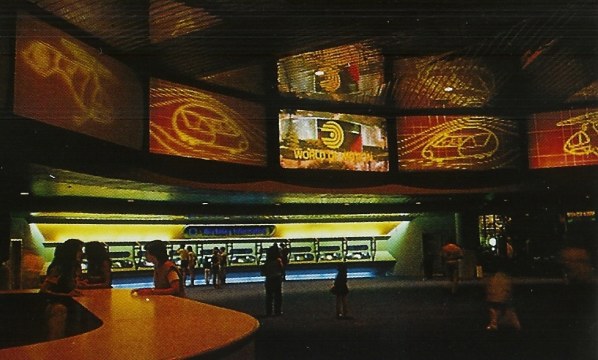 Upon exiting the vehicle, we proceed to Earth Station, the Guest Relations for EPCOT Center. Here, we make lunch or dinner reservations by talking to a human cast member via a FaceTime-esque system. When the terminals are not being used for reservations, guests can reserve their FastPass+ times, get information on the different pavilions and where the shops, restaurants, and restrooms are located. Overhead, screens provide an overview of the park, in a style very similar to the "A Day at EPCOT Center" souvenir video.
Upon exiting the vehicle, we proceed to Earth Station, the Guest Relations for EPCOT Center. Here, we make lunch or dinner reservations by talking to a human cast member via a FaceTime-esque system. When the terminals are not being used for reservations, guests can reserve their FastPass+ times, get information on the different pavilions and where the shops, restaurants, and restrooms are located. Overhead, screens provide an overview of the park, in a style very similar to the "A Day at EPCOT Center" souvenir video.
--------------------------------------------------------------------------------------------------------------------------------------------------------
EPCOT Center
Future World
~~~~~~

Spaceship Earth

Future World
~~~~~~

Spaceship Earth

Spaceship Earth takes you through the historical and cultural progression of the world, showing how the world has evolved through communication. The attraction dates back to the earliest periods of the cavemen, proceeding through many different eras and civilizations before arriving in the current one in which we live today. A major point that I want to address with the renovation of Spaceship Earth is the actual theme of the attraction. Ever since the 2007 refurbishment, the theme of the attraction has been the evolution of technology and ways to communicate, from the hieroglyphics in Egypt, to the Phoenicians developing the alphabet to the dawn of computer systems. The theme of the attraction has always been about the potential of communication, to branch out and to communicate across the world. I believe with the previous renovation, that was an aspect of the theme that was lost. It is not just about ways TO communicate, but rather HOW FAR we can. I want that to be a part of the attraction that is re-touched on.
In addition, the entire attraction will undergo several audio and vehicle repairs, to make sure that the attraction not only sounds as best as it could be, but that there is a fluid movement to the attraction, so that it is not as bumpy as it currently is. Speaking music-wise, Edo Guidotti’s acclaimed score for the 1994 incarnation will be restored. Also, the use of the video screen technology is going to be heavily toned-down. The entire descent down of Spaceship Earth will no longer utilize the video screen technology. Instead, the video screen will operate as a timeline as the vehicles travel through the attraction. As the vehicles reach each new era, it will display the approximate year and location on earth of where the events we see in the attraction actually happened in real-time. I know that the addition of video screens is one of the things that many people disliked about the recent refurbishment, so this may be a way to utilize the video screen technology in the attraction, without it being an entire centerpiece, as seen in the finale, which will be completely revised.
Most of the ascent will be the same; so watch the video above, mute that condescending Dench narration, blare that Guidotti score, and let's go!
~~~~~~~~~~
Boarding our blue Omnimover time machines, we set off on a time traveling adventure unlike any other.ANNOUNCER: On behalf of EPCOT Center, welcome aboard Spaceship Earth. Journey with us now as we travel through time to explore the fascinating history of human communication.
The vehicle enters a dark tunnel and rises sharply upward. A starfield appears and we hear soundbites from famous people such as Susan B. Anthony's "We ask equality be guaranteed...", JFK's "Putting a man on the moon," and FDR's famous line, "The only thing we have to fear is fear itself." Along the walls, light surges up colored "wires" towards the top of the tunnel. As we near the top, we see a projection of purplish clouds and an occasional lightning bolt as we hear the ride's narration begin.
NARRATOR: Like a grand and miraculous spaceship, our planet has sailed through the universe of time. And for a brief moment, we have been among its many passengers. But where did we come from and where were we going? In the dust from which we were formed, the walls of time have recorded the answers to these questions and so many others. And from the very beginning with our ancestors, we have always wanted to reach out to each other... to bridge the wide gaps between us... to communicate.
Once at the top of the tunnel, we see animated projections of Neanderthals fighting for survival without a sense of communication and language. We then enter a cave and see a Shaman, or medicine man, with a fur cape and antlers on his head. Two men sit around the fire listening to the Shaman. His large shadow is reflected by the fire onto the cave wall. A woman is also listening while working with a fur. On the far right wall, a man and a woman are painting a message on the wall. The drawings are similar to those found in the Salon-Niaux cave in Ariège, France, circa 10,000 B.C. Sounds of animals growling echo through the caves.
Sweeping across a vast, lonely, hostile planet, our early ancestors had set out in every direction, for they were intent on their search for food and shelter. With the development of speech came a very significant answer to survival. Now we could share and learn from one another. On the walls of caves, we inscribed our utmost victories, an increasing proof of our deeds to share with others so they too may greet tomorrow's sun.
Moving into an Egyptian temple, representing 1567 - 1085 B.C., a man on the left is making paper out of papyrus. On the right, next to an elaborate entrance to a building decorated with hieroglyphics, a man stands high upon scaffolding carving a ventilation hole near the top of a tower. Nearby, a man sits on a rock, pounding papyrus. Further ahead on the left, an Egyptian pharaoh is dictating a message as a scribe copies it onto the new paper. His wife is seated next to him while a servant fans them.
Within a few thousand years, the Egyptians created more walls, each of which covered in the first written form of communication: hieroglyphics, a multifaceted language of symbols and pictures. Now we could release our thoughts from carved walls and set them down on papyrus scrolls, the first form of paper. Pharaohs could now deliver declarations to subjects throughout the land.
In the Phoenician scene, 9th century B.C., two ships meet in the ocean to exchange goods. Another man on the larger ship, behind the smaller ship, holds a rope that is connected to the smaller ship so that both ships stay together. Fog surrounds the ships. Smoke rises from small fires in pots at both ends of the larger ship. To the right of us is a wall showing the ocean going to the horizon and stars above.
Then came the Phoenicians who not only helped institute the first means of trading goods to distant ports of call, but also created the first common alphabet and delivered it from one area of the Mediterranean to another.
Up next on the right is a Grecian school, circa 428 B.C. An elderly man teaches three young scholars.
In ancient Greece, the spoken word is elevated to a higher level of knowledge. With the help of new trade routes by land and sea, the Greeks realize the vital role math and science plays in aiding a powerful empire. Schools are opened, forums are established, and knowledge is spread throughout the empire.
Ahead on the left, a young Roman man holds the reins to a two horse-drawn chariot. The man, dressed as if he is in the Roman army, who arrived in the chariot is now exchanging information with another man dressed in a toga. The man holding the reins is standing on the ground with the horses, the army man is standing one step up, and the man in the toga is standing one step up from there on a marble platform. He is between four large columns, two on each side. Smoke rises from two small fires in metal pots/stands on both ends of the scene. In the back is a painted wall showing the streets of Rome. An animated horse-drawn cart with a man riding in it dashes out of one street and off into the distance.
The great Roman Empire intertwined three continents with roads, one of the fastest information highways the world had ever known. Whether east, west, north, or south, they all led to and from Rome.
We then see a building in ruins with smoke rising from it. The smell of the burning building fills the air.
Alas, these same roads spelled doom for Rome, thanks to invaders who left Rome, and centuries of knowledge, in the ashes of the Dark Ages. But all was not lost. Far from the smoldering embers, Jewish and Islamic teachers would not give up the quest for knowledge. As they traveled, they debated ideas and shared new breakthroughs to anyone who would listen.
In the Islamic Empire scene, on the right, four men sit around a table on pillows on the floor discussing topics. One man has two books right next to him and another has a wooden book holder that holds the book open to a specific page. On the left is a library with some books on the shelves. They aren’t stacked full. Two men, one standing, one seated on pillows on an elevated platform, are reading. Standing up high on the balcony on the right is an astronomer looking at the stars through a quadrant, which is an exact replica of the real thing. Further ahead on the left, two Benedictine Monks, 11th and 12th century, are seated at their desks copying text. The one on the right has fallen asleep at the job. His chest rises and falls as he breathes in and out.
In western abbeys, monks toiled endlessly in silent seclusion, copying old books of wisdom and revelations for future generations. At long last, from the depths of the Dark Ages, came the Renaissance and a wonderful new invention, the printing press. Now for all: the printed word.
On the left, two men are working with a large wooden printing press. Johann Gutenberg is studying a piece of paper that just came off the press (1456).
Scientists, scholars and explorers expanded their discoveries into books and essays. Poets, musicians and artists all fanned the flames of the Renaissance, swelling it into a time of priceless works of beauty and majesty.
In Renaissance Italy (1500s), on the right, one man is reading a book to two listeners on the steps. Also, two musicians are playing just beyond in front of a closed doorway. An Italian town can be seen through the columns and arches in the background. On the left, in an artist's studio, we see a man mixing paint, another painting some fruits with a bowl of fruit as a guide, and another chiseling marble to create a statue. Sketches of the female subject are on the wall behind him and to the left of him is a small statue that he also uses as a guide. Further ahead and up on the left, we see Michelangelo painting the Sistine ceiling while lying on his back high upon scaffolding. Below, the stained glass church windows are illuminated with black light. To the right is a conveyance system that allows buckets of paint to be hoisted up the scaffolding to Michelangelo.
On this wave of inspiration, we sail into a bold, new era: an age of amazing inventions and ever-increasing progress in communications, bringing people worldwide together as never before.
Now we move into the Age of Invention (19th and 20th centuries). First, we see a large steam-powered printing press by William Bullock in 1863. Just like Gutenberg inspected his printed paper, a man stands in front of the press and inspects a newspaper that was just printed. Nearby, on a street corner, a boy stands with a stack of New York Daily papers calling out to try to sell them.
NEWSPAPER BOY: Extra! Extra! Read all about it! Radio, telephone links two continents. Read all about it. Telephone crosses Atlantic. Get your evening paper here!
NARRATOR: With inventions such as the telegraph and telephone, messages and voices criss-cross nations instantly. Newspapers and cinemas allow mass communication to be available to anyone, anywhere.
On the right, one man is dictating a message and the other is using a telegraph to send the message. Through the window and door behind them, we can see train tracks crossing the plains to the mountains in the distance. On the left is a switchboard that three women, two seated and the third standing, are operating. Behind that are several windows that represent homes and apartments throughout the town. Fiber optic telephone lines stretch from the switchboard across poles to the homes. We can hear conversations coming from the shadows of people in some of the windows. On the right, is a woman in a ticket booth. Above that and also spanning above us is a lighted "Cinema" sign. There are three screens to the left of the booth that show scenes from an old black and white movie about a guy on a runaway trolley ("Stop that trolley!" is one of the captions), Snow White and the Seven Dwarfs (1937) and 20,000 Leagues Under the Sea (1954). The screen showing the old movie is surrounded by red curtains and gold trim to look like the fancier theaters of its time. Back on the left is the WDP radio station. WDP is, of course, short for Walt Disney Productions. A man and a woman inside the sound booth are live on the air acting out a story. A man outside the booth is checking sound levels and directing. To the right of that is a radio tower with a red light blinking on top. On the wall behind it is a painting of another radio tower in the distance. Surrounding its red light are drawings of the radio waves spreading from the tower. Just beyond that is a family (mother, father, and daughter) sitting in their living room around the TV. The mother changes the channel using a large, by today's standards, remote control. Three other TVs hang on the wall up behind the family TV. The TVs are playing Ozzie and Harriet, the 1964 NFL Colts vs. Browns Championship Game, Walt Disney introducing an episode of Walt Disney's Wonderful World of Color and Neil Armstrong landing on the moon.
Then, on July 20th, 1969, the world experienced one of the most significant events in communications history...
NEIL ARMSTRONG: That's one small step for man...and one giant leap for mankind.
NARRATOR: In order to get to that momentous occasion, a new language had to be created. A language not spoken by man...but by computer.
We then enter a 1960's-era computer lab.
In this unique form of language, human communication is translated into numbers. Early mainframe computers, some the size of the average home, dot various laboratories to record and store information.
The vehicle progresses through a garage in California, where a man is seen building one of the very first home computers.
By the end of the 20th century, the personal computer and the internet evolve the perceived notion of instant communication and modern day trade. Today we are merging various technologies to create and shape a better tomorrow, from the interiors of our home...to the far reaches of outer space.
Fiber optic lights then transfer the information to a large sphere representing Earth. We pass through a satellite transmitter that has rays of electric energy fly overhead, representing Internet information jumping from city to city and sometimes across continents to computers. We then enter a tunnel that surrounds us with lights blinking and whirling past. The sounds of jumbled conversations and visuals of words (e-mails) join the music.The rays of energy converge and expand, covering the vehicles, almost as if it is being sucked into this expanse of energy. The video screens begin to illuminate with a series of digits and letters, as if it was being enveloped by a matrix. The vehicles travel down a glittering, illuminated matrix, before arriving at the peak of the attraction.
Verged on the threshold of infinity, we see our world as it truly is: small, silent, fragile, alive, a drifting island in the midnight sky. We are a truly global community, poised to shape the future of this, our Spaceship Earth.
Outer space. Looking in from space, up at the Earth. The entire peak of the attraction features glittering, new fiber-optic stars, as well as projected stars filling the vast space sky. Edo Guidotti's sweeping score fills our ears. The vehicles then rotate backwards, as they begin their descent back down to earth.
ANNOUNCER: Attention, travelers of time. Please remain seated at all times. Your time machine is rotating backwards for your return back to earth.
What follows is an all-new descent. As I said earlier, the video screens will no longer be utilized during the finale and much of the current finale will be completely removed. As for the new descent, I propose an interesting new idea: Carl Sagan and the Voyager Project.
As we turn and are greeted by the climax, the Earth and we start our descent, we start to hear Carl Sagan's “Pale Blue Dot” speech. Using a long, ribbon-like screen that follows us down the descent, a video like above is playing, showing us moving backwards away from Earth towards the outer reaches of the solar system. We get farther and farther away from our home, passing planets and asteroid belts, with our Earth getting smaller and smaller, until we finally reach that iconic sunbeam off of Saturn, we have reached the end of his speech.
CARL SAGAN: Look again at that dot. That's here. That's home. That's us. On it everyone you love, everyone you know, everyone you ever heard of, every human being who ever was, lived out their lives. The aggregate of our joy and suffering, thousands of confident religions, ideologies, and economic doctrines, every hunter and forager, every hero and coward, every creator and destroyer of civilization, every king and peasant, every young couple in love, every mother and father, hopeful child, inventor and explorer, every teacher of morals, every corrupt politician, every "superstar," every "supreme leader," every saint and sinner in the history of our species lived there--on a mote of dust suspended in a sunbeam.
The Earth is a very small stage in a vast cosmic arena. Think of the rivers of blood spilled by all those generals and emperors so that, in glory and triumph, they could become the momentary masters of a fraction of a dot. Think of the endless cruelties visited by the inhabitants of one corner of this pixel on the scarcely distinguishable inhabitants of some other corner, how frequent their misunderstandings, how eager they are to kill one another, how fervent their hatreds.
Our posturings, our imagined self-importance, the delusion that we have some privileged position in the Universe, are challenged by this point of pale light. Our planet is a lonely speck in the great enveloping cosmic dark. In our obscurity, in all this vastness, there is no hint that help will come from elsewhere to save us from ourselves.
The Earth is the only world known so far to harbor life. There is nowhere else, at least in the near future, to which our species could migrate. Visit, yes. Settle, not yet. Like it or not, for the moment the Earth is where we make our stand.
It has been said that astronomy is a humbling and character-building experience. There is perhaps no better demonstration of the folly of human conceits than this distant image of our tiny world. To me, it underscores our responsibility to deal more kindly with one another, and to preserve and cherish the pale blue dot, the only home we've ever known.
You should be able to picture this just by watching the video above, and hopefully you can see how much of an impact this could make. It sets the tone for a new Epcot. It unifies us as one world, it gives us a sense of perspective, and it honestly would give me chills every time. Now, Sagan's “Pale Blue Dot” is only about the length of half of the descent, leaving us with another 3:00 or so. Once we hit the mote of dust in a sunbeam and Sagan completes "the only home we've ever known", the video picks up a small spacecraft, Voyager 1, racing out away from our solar system.

NARRATOR: Carl Sagan was one of history’s greatest minds. He found a profound spirituality in experiencing the wonder and majesty of the universe. And this passion led to the creation of the Voyager project, perhaps one of the most interesting communication experiments ever created. The Voyager 1 spacecraft serves as a way to potentially communicate with anyone that might find it in the vast reaches of space. On the front of the spacecraft, Carl, and his wife, Ann Druyan, created a golden record. On this, they put instructions in how to play the record, and they recorded a variety of sounds from planet Earth to try and help communicate who we are as a people to any civilizations that may encounter our little probe.
We hear a sample of the sounds heard on the Golden Record.
On it are recordings of people saying hello in some of the most popular languages in the world. On it are music pieces from different cultures. On it are the sounds of a mother's first words to her child. On it is a recording of the brain activity of a woman in love. The whole of humanity boiled down to sound, and etched onto a record made of gold with a potential lifespan of one billion years before the gold decays to where it is unusable. Voyager is, in fact, our attempt at communicating not just with each other here on Earth, but out into the stars. There is such a beauty in what is recorded, what is trying to be done here. Even though the chances are highly unlikely that anyone will ever intercept Voyager, it is our attempt to share humanity with the universe.
Let us all learn from the Voyager project, and continue to expand and build. A new Renaissance is upon us, and the wondrous new tools we build will help us learn more about ourselves, each other and the planet we share. We'll find new ways to share our dreams and ideas and create a better world for today, tomorrow and tomorrow's child.
As the vehicles continue to ascend down, Guidotti's score fades out and replacing it is the sound of "Tomorrow's Child"--the theme for the ride during the Cronkite era (1986-1994), which has made its return for this new version. (This should be done so that Guidotti's score blends with the instrumental that begins the song, as I'd like to utilize the original recording.)
Our descent continues through space, and through the stars. Constellations form above our heads. Shooting stars whiz past. As we continue past, we see stars form the images of children holding hands, a person using a microscope, DNA strands, the universe, etc. Each star formation then shoots to a new place and forms a new formation, symbolizing the transfer of ideas. As we near the unloading station, the vehicle becomes wrapped in a descent of stars, as twinkling, colorful fiber-optics swirl overhead before seemingly dissolving into a series of glittering bulbs, as if fading, just as the vehicles turn around to reveal the unloading station.
Since the dawn of recorded time, communication has transformed our ways of life and changed our world. We now have the ability and the responsibility to build new bridges of acceptance and cooperation between us, to create a better world for our children and ourselves as we continue our astounding voyage onboard Spaceship Earth.
ANNOUNCER: Thank you for traveling with us on Spaceship Earth. When the doors of your vehicle open, please gather your personal belongings, take small children by the hand and step out onto the moving platform up ahead. The platform and your vehicle are traveling at equal speed.
~~~~~~~~~
Earth Station

Last edited:




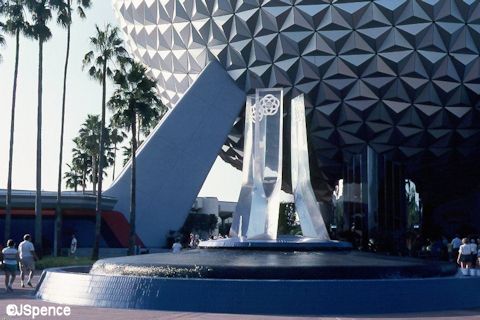




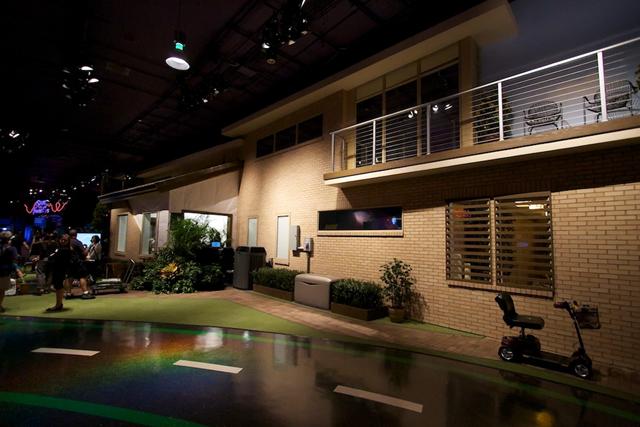





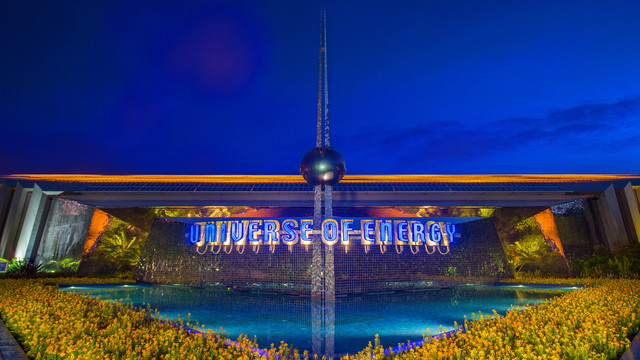






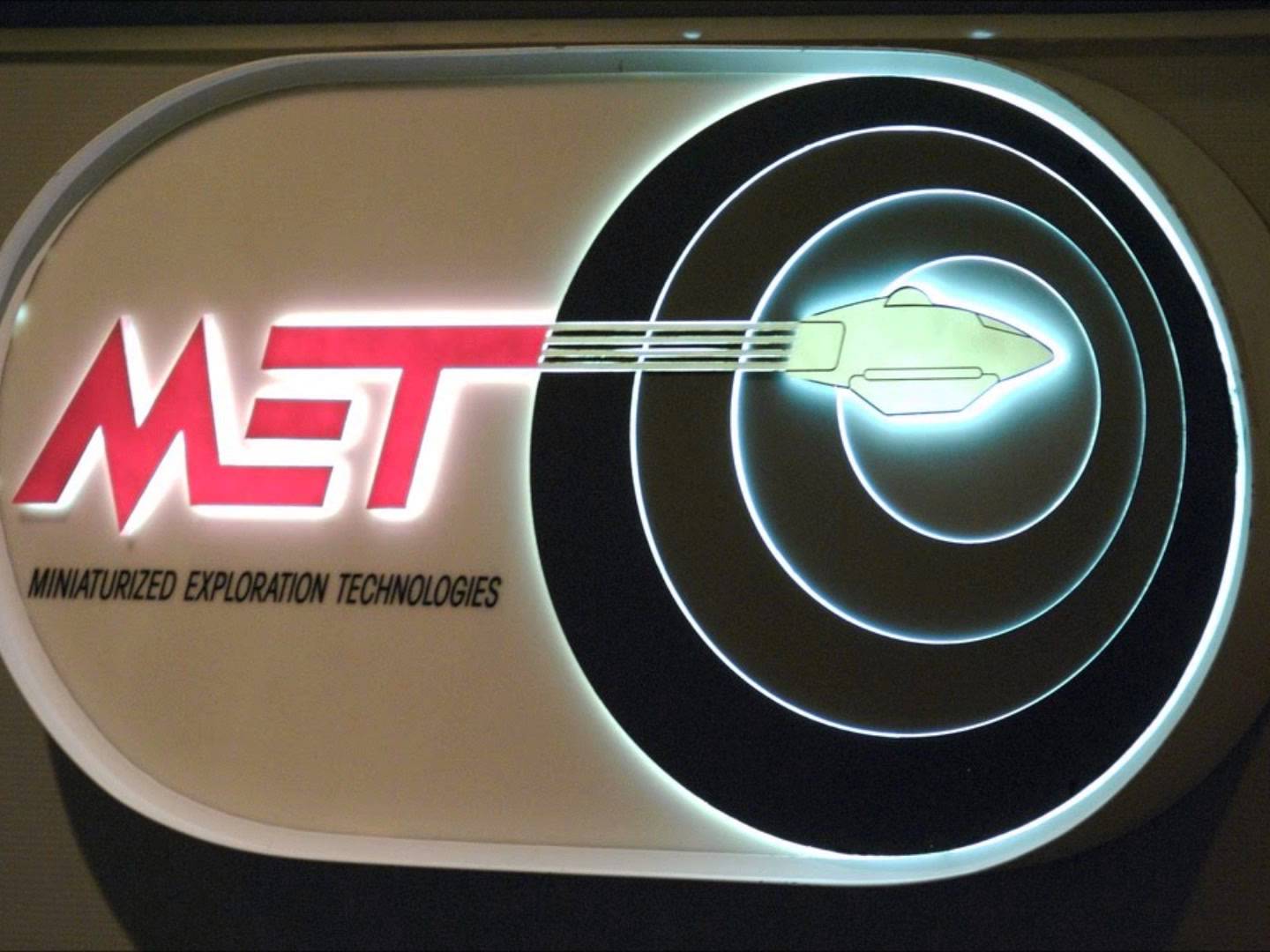


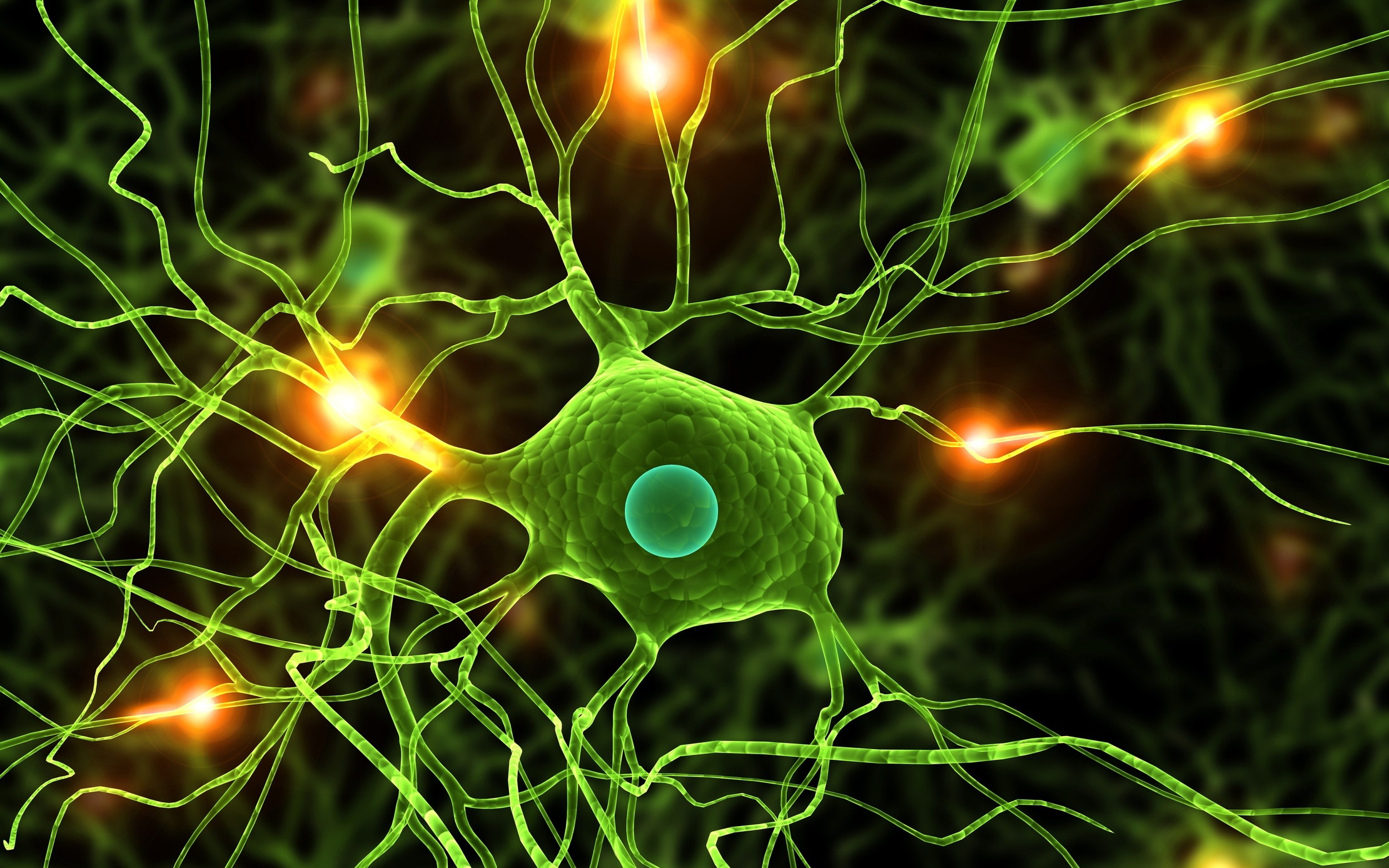

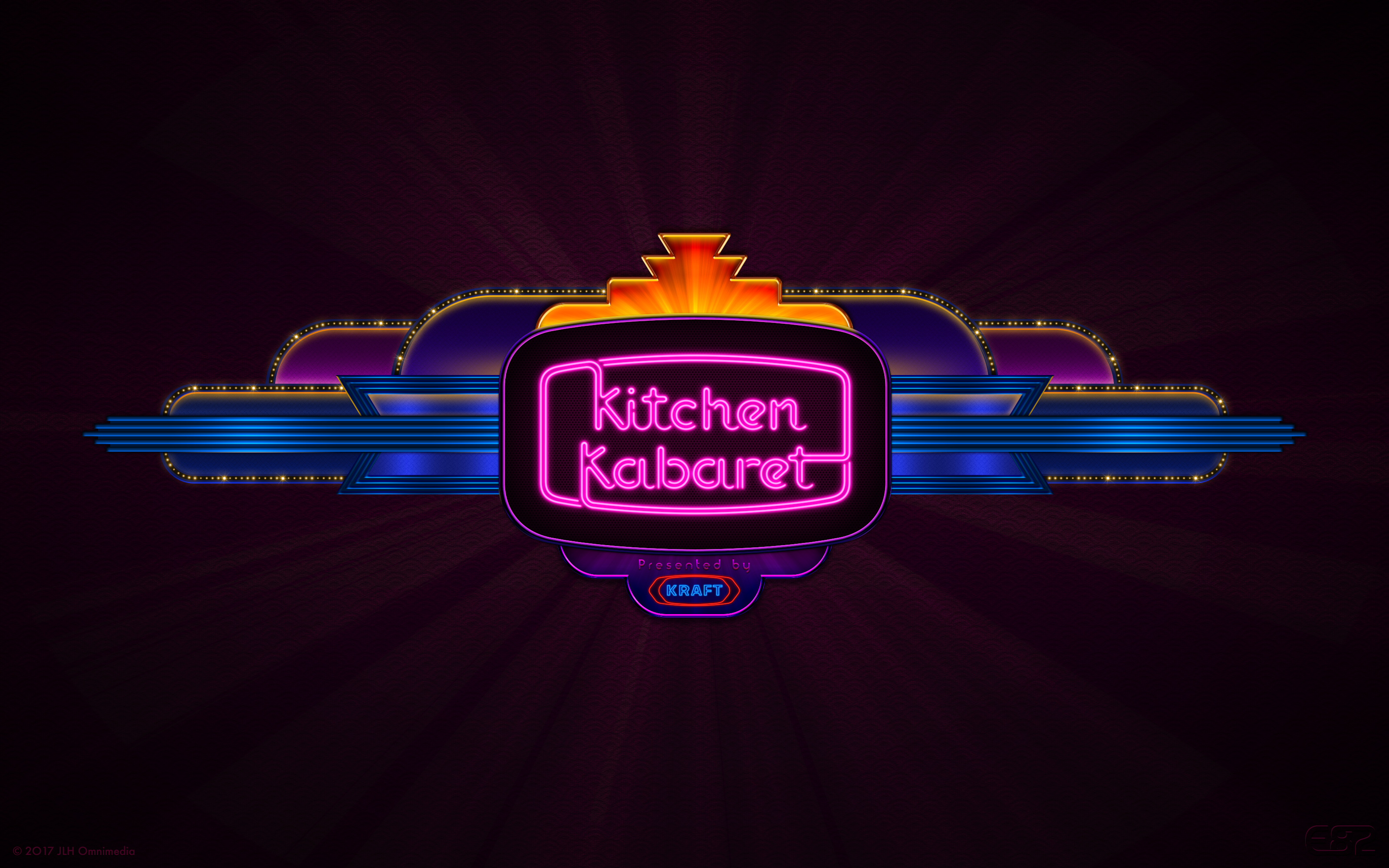




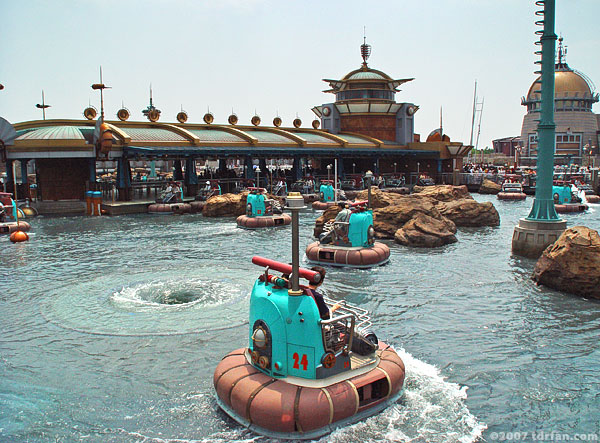






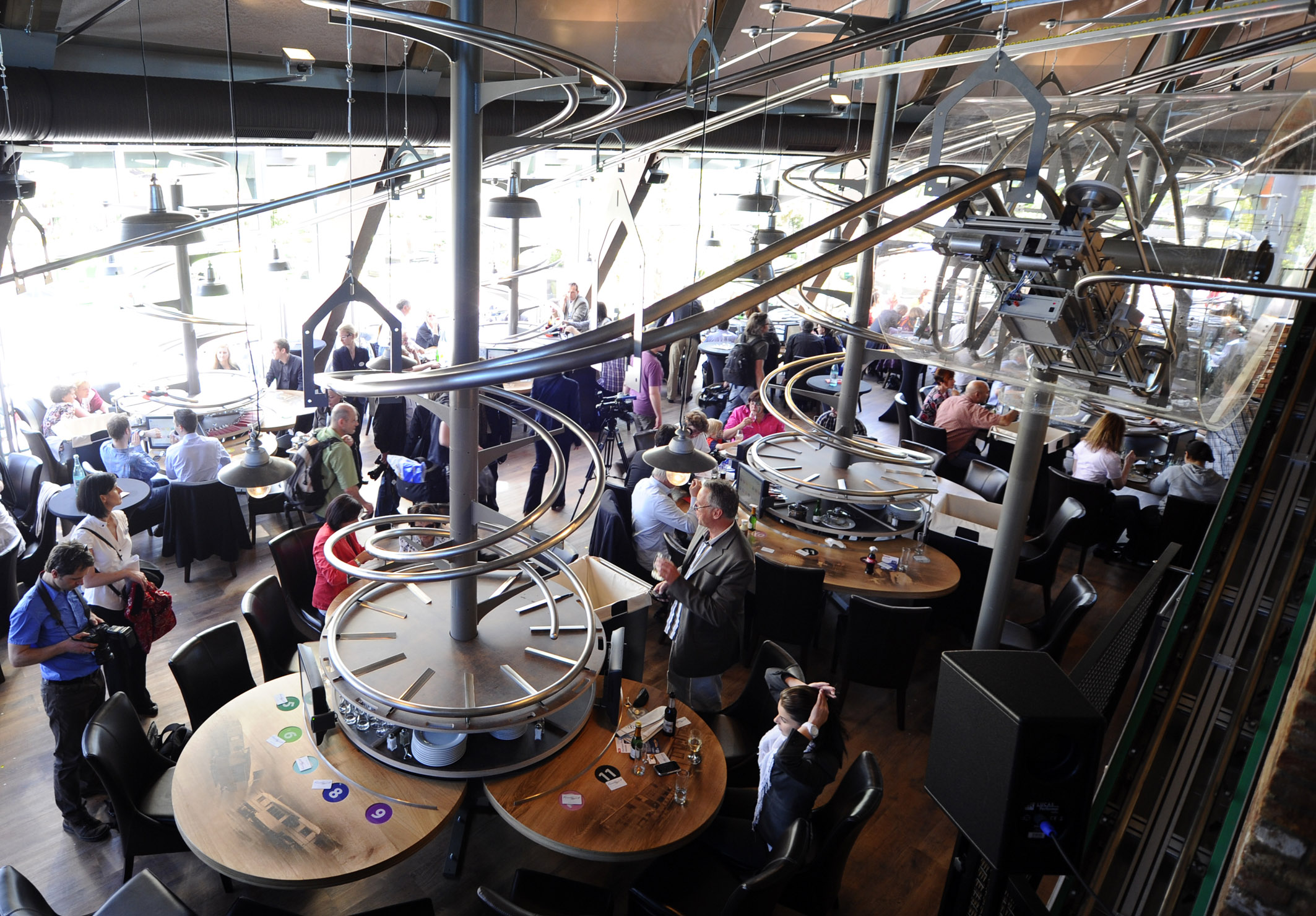
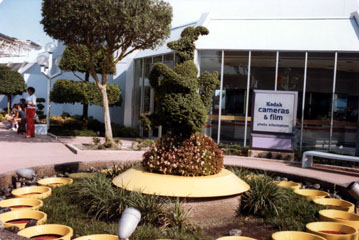



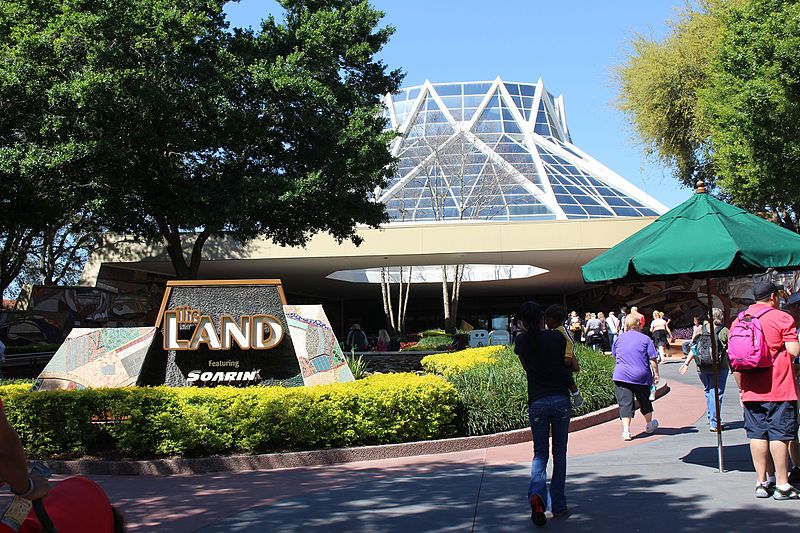



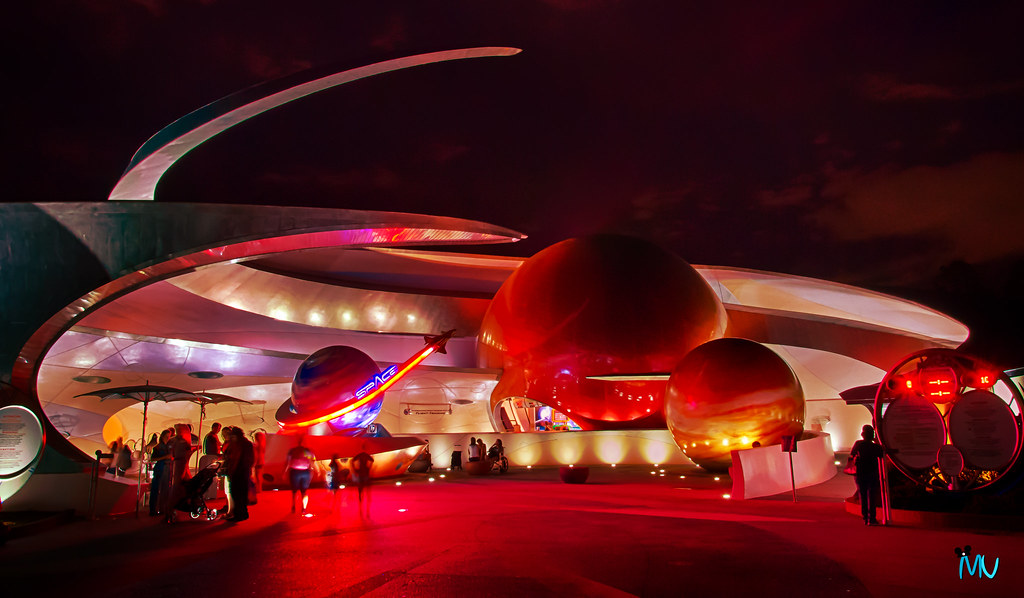





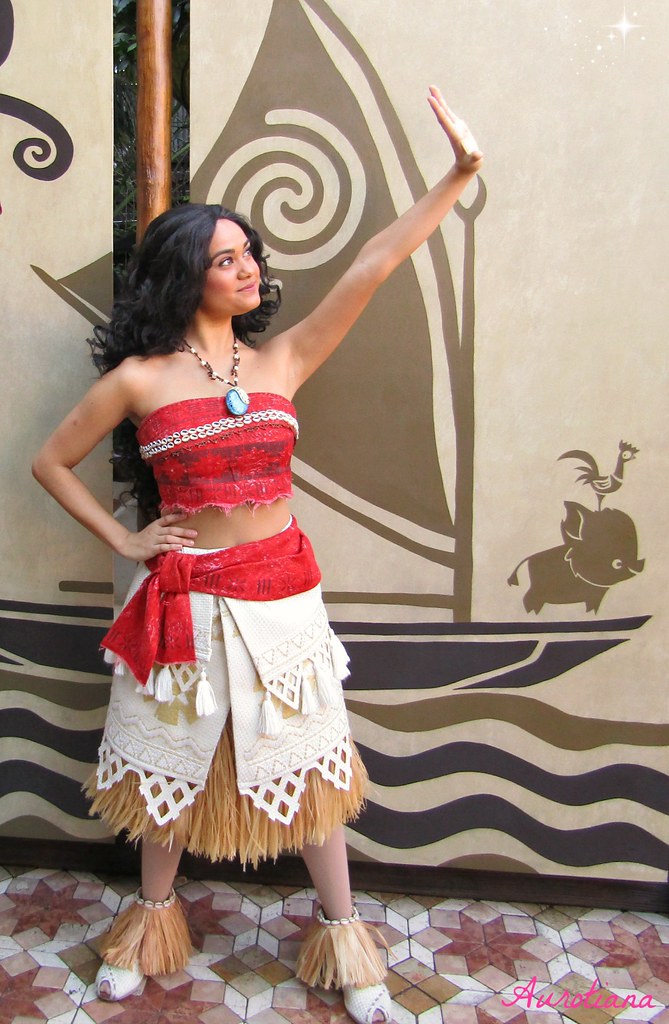



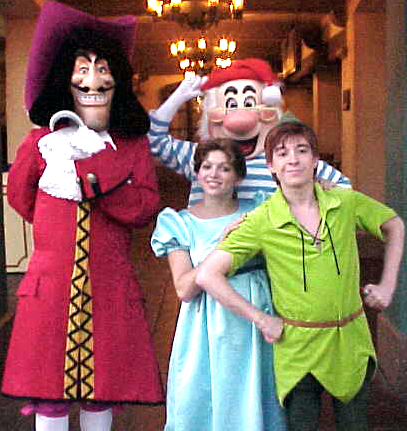


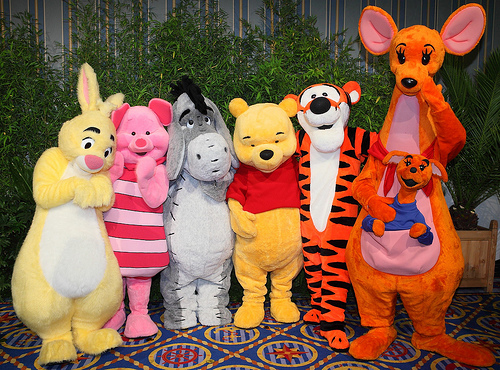


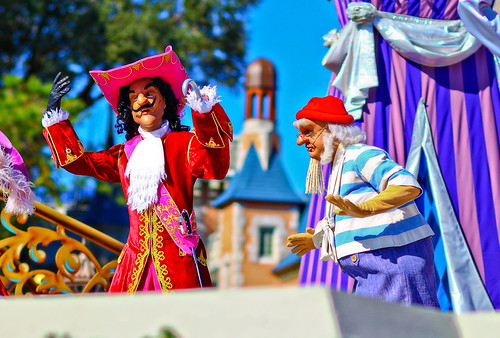


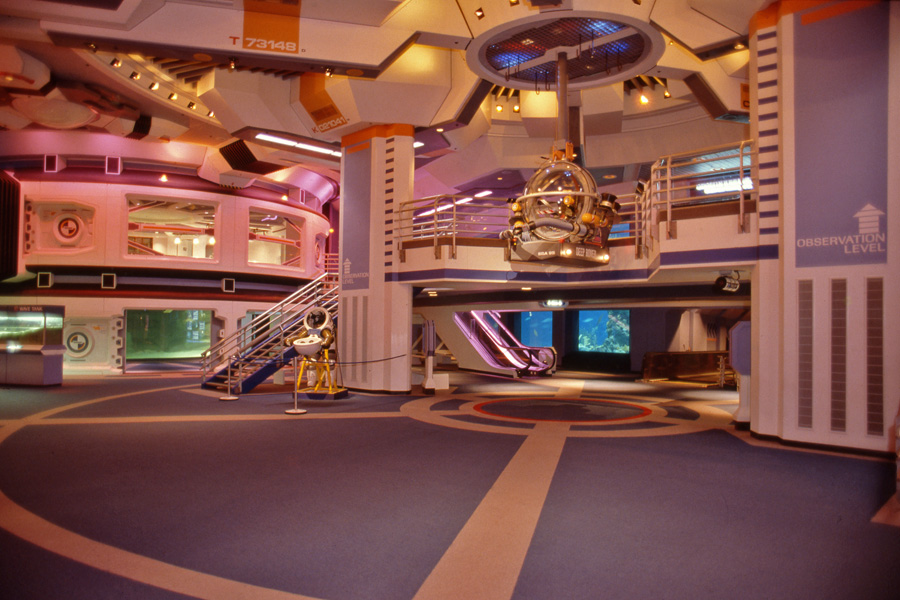






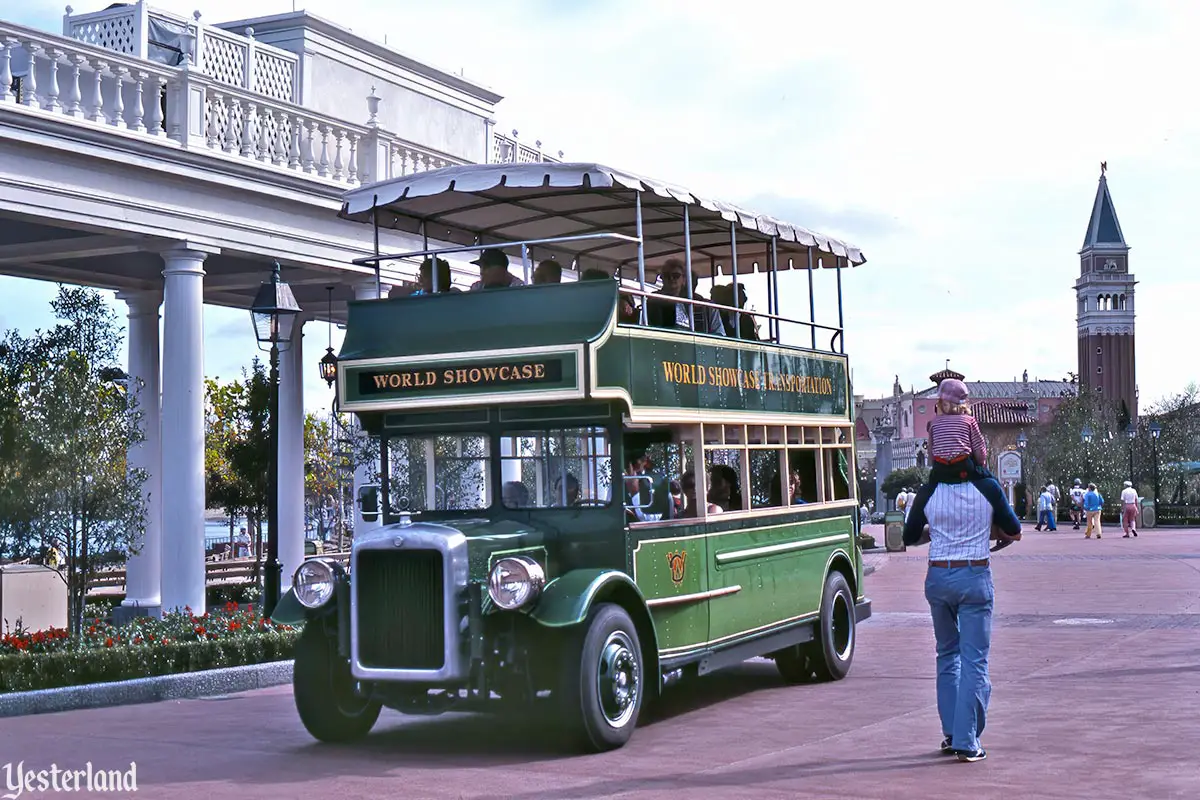
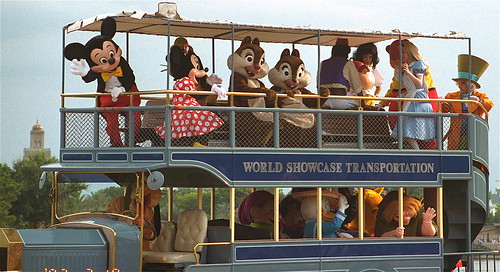
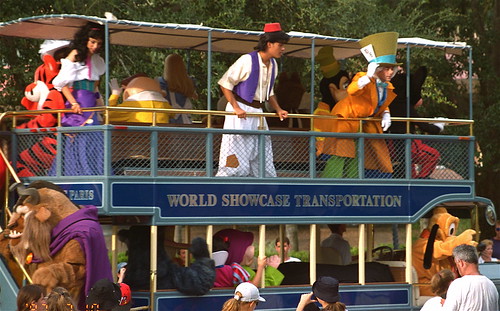


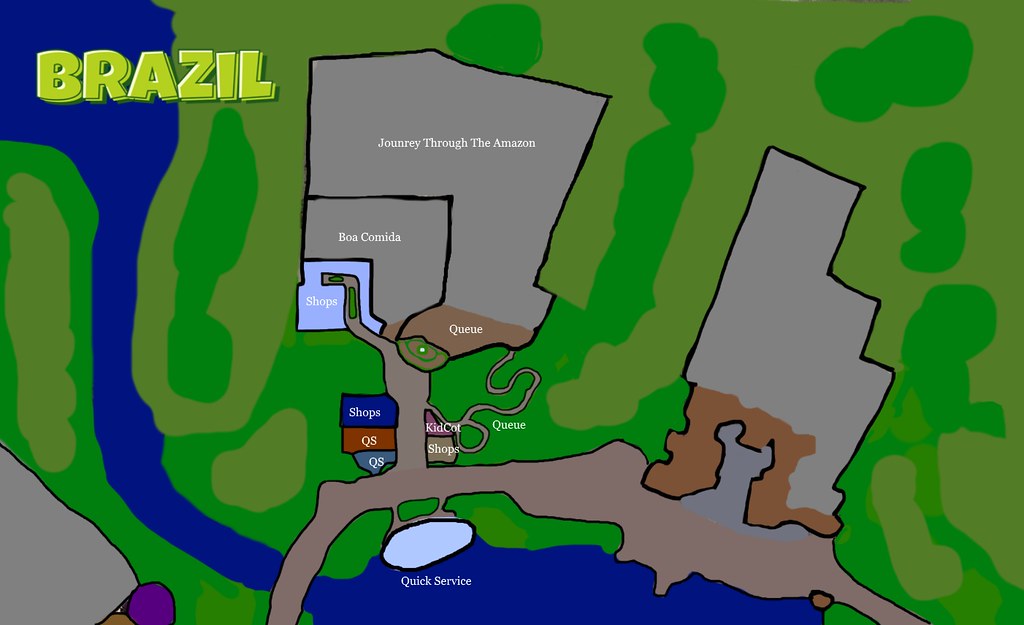
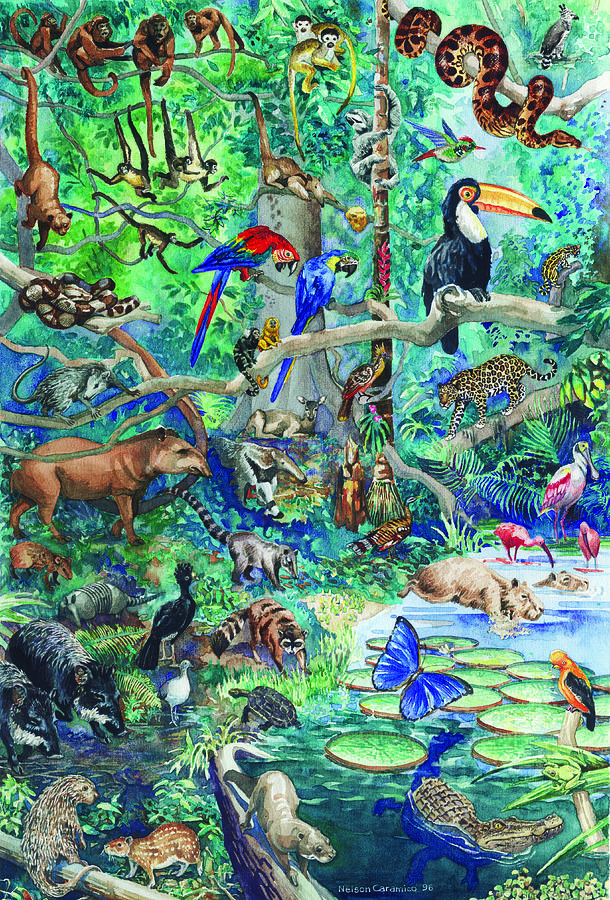
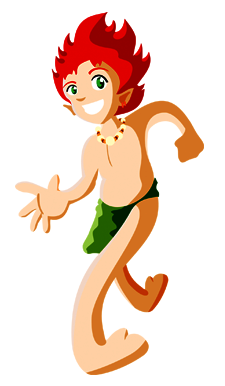


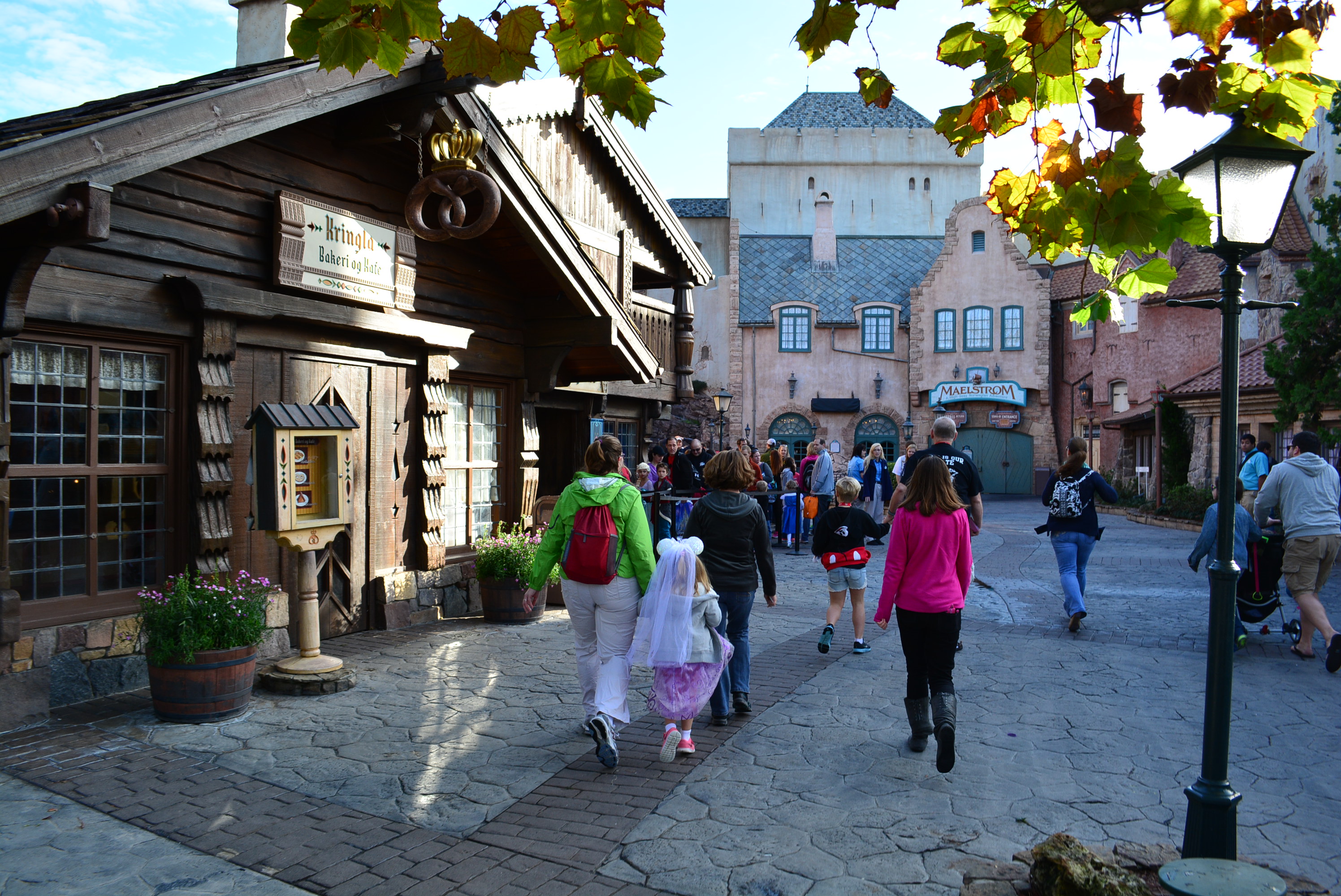





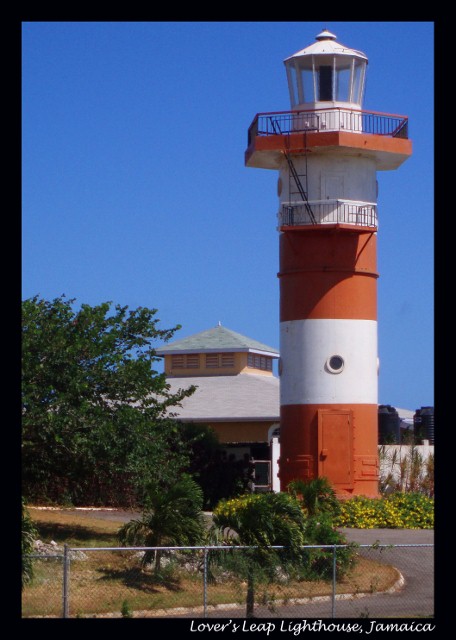

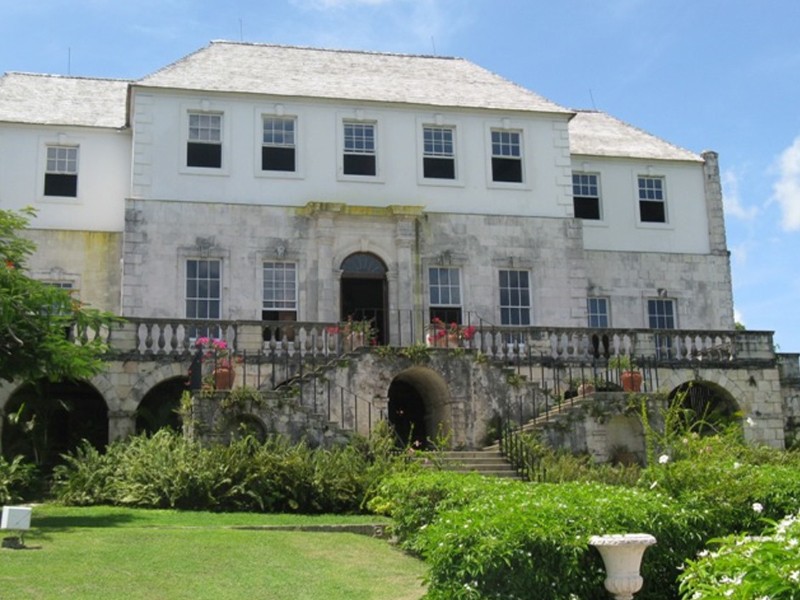



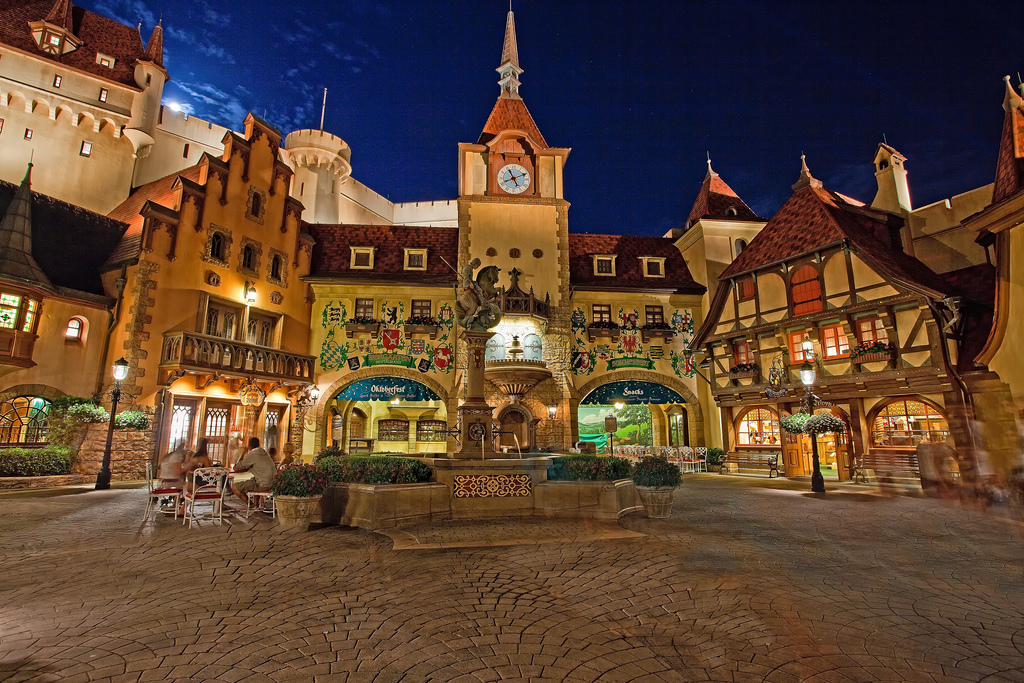
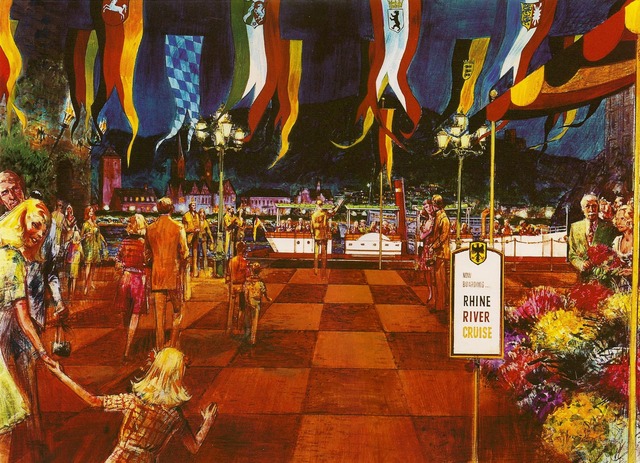
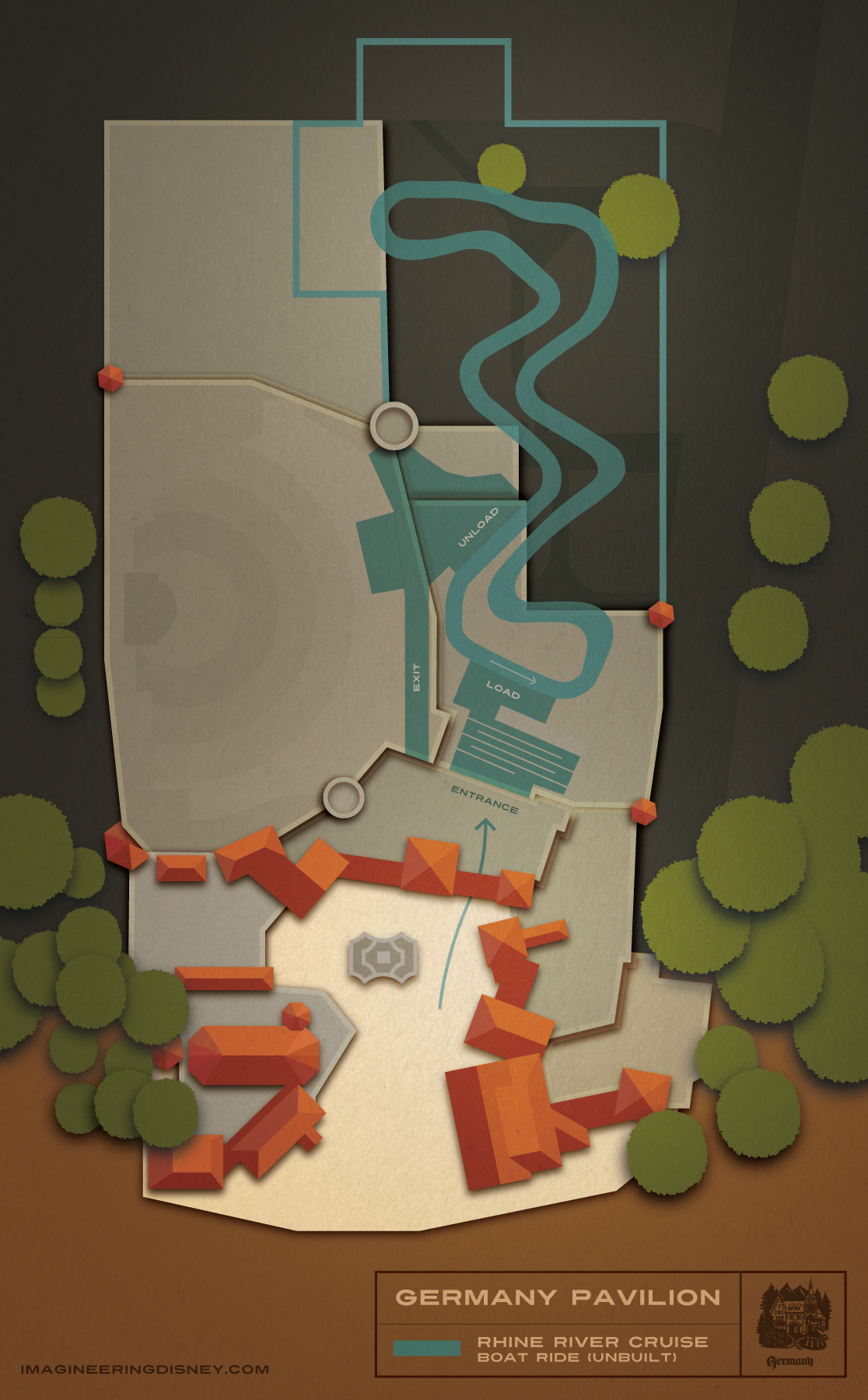
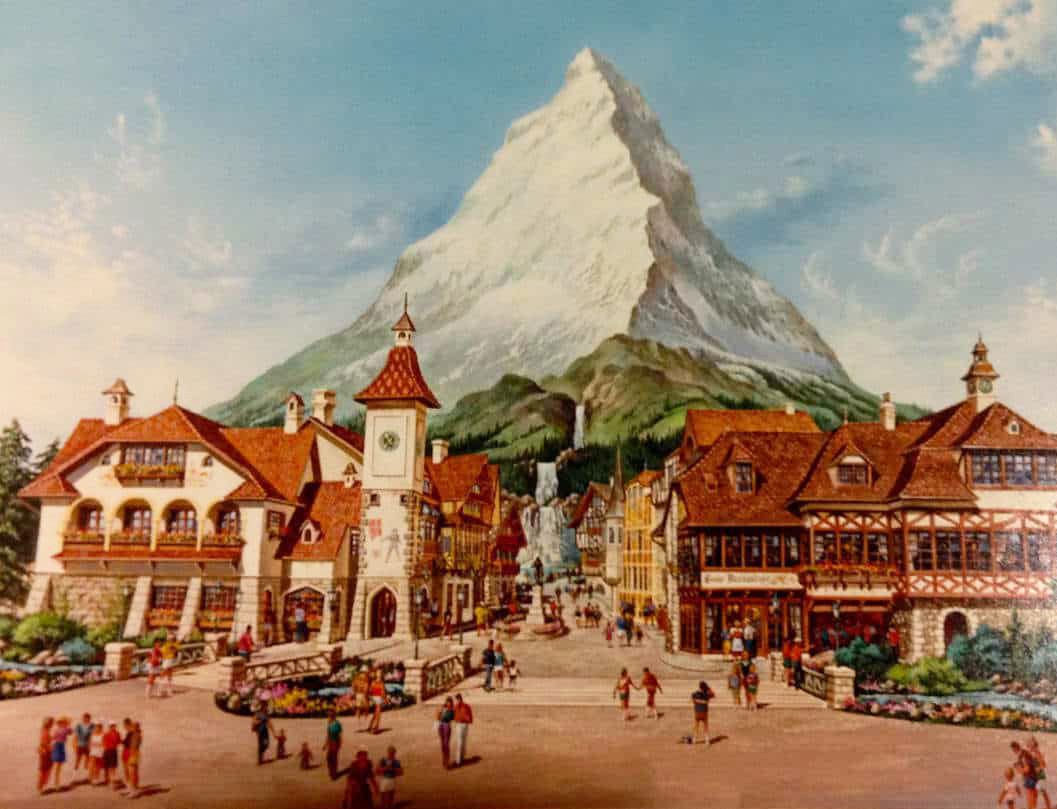



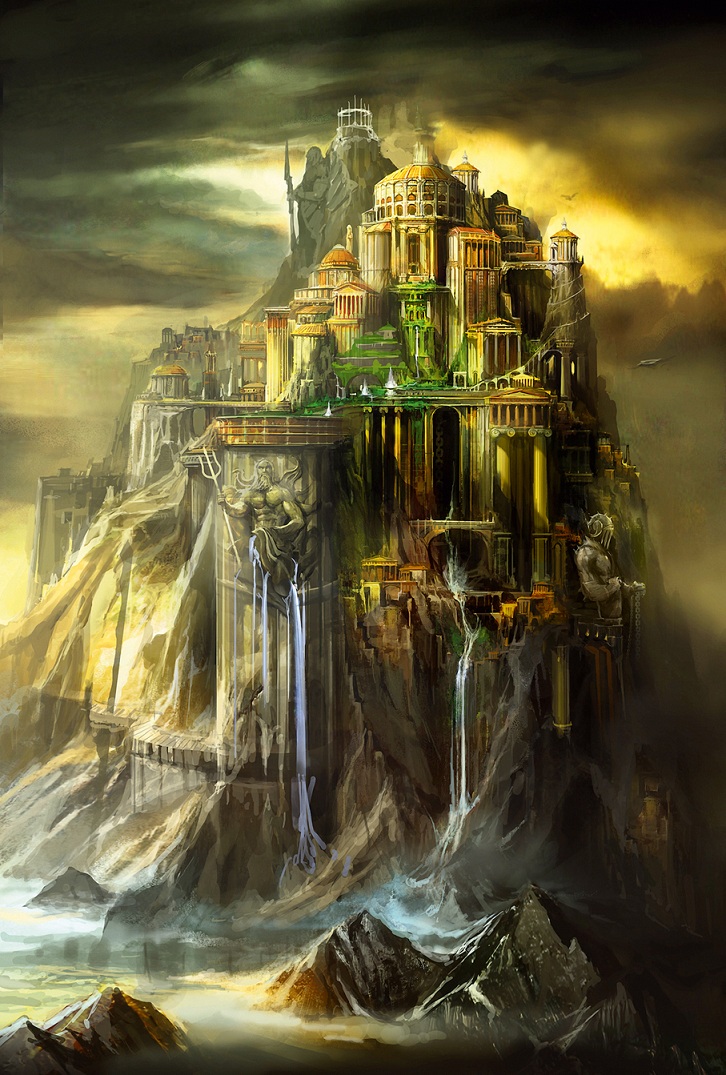



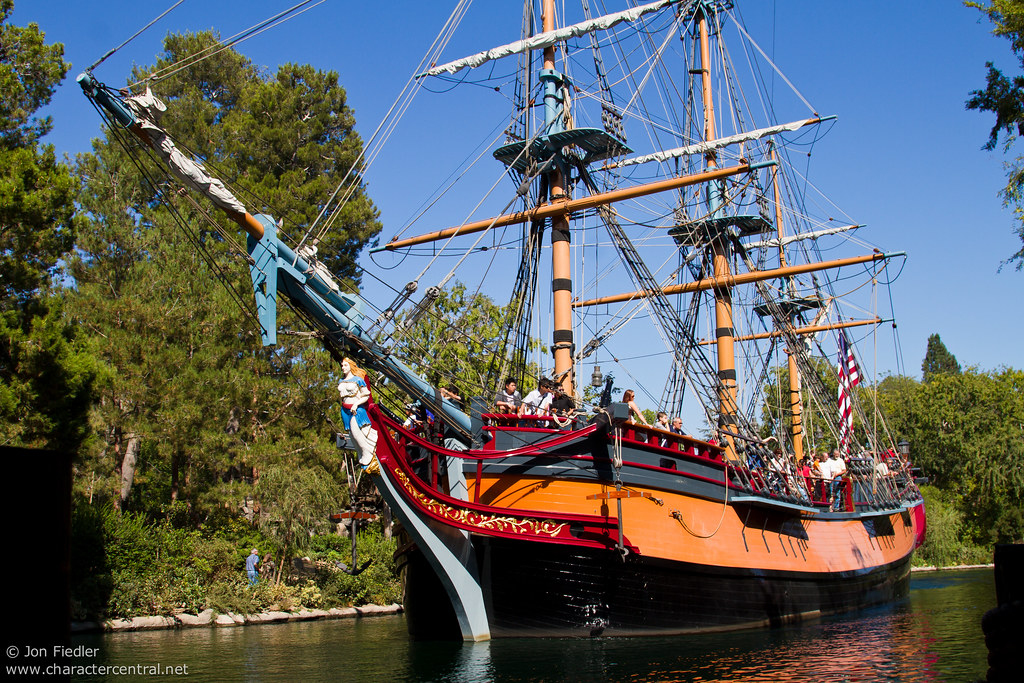



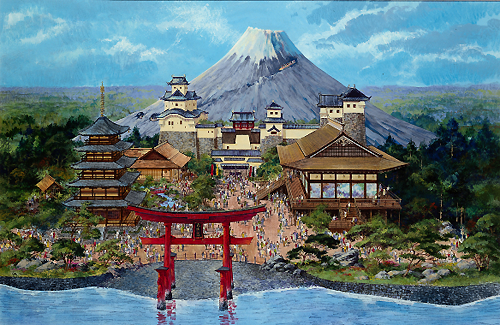
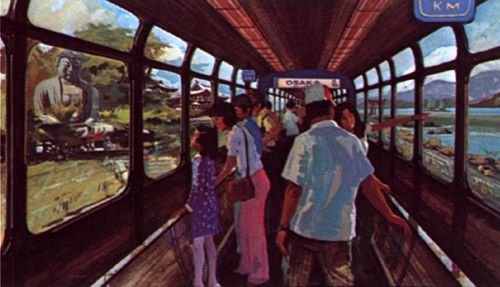




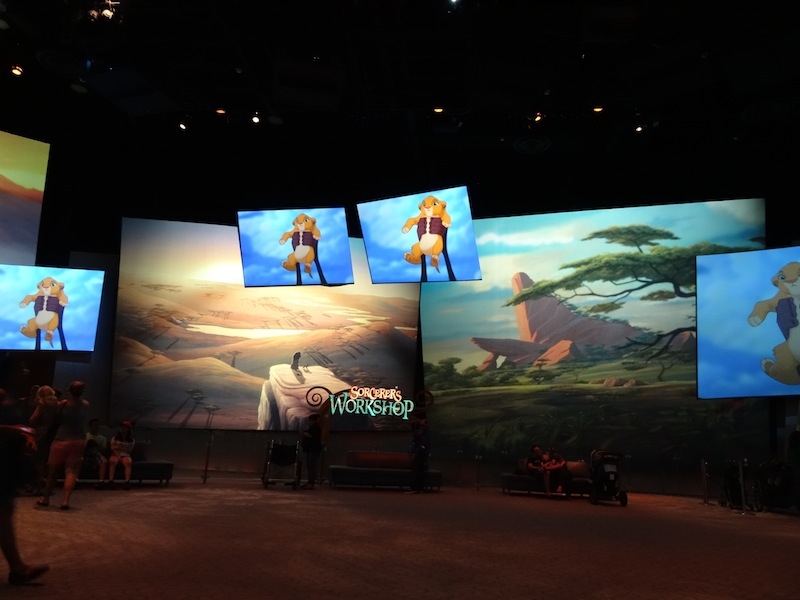

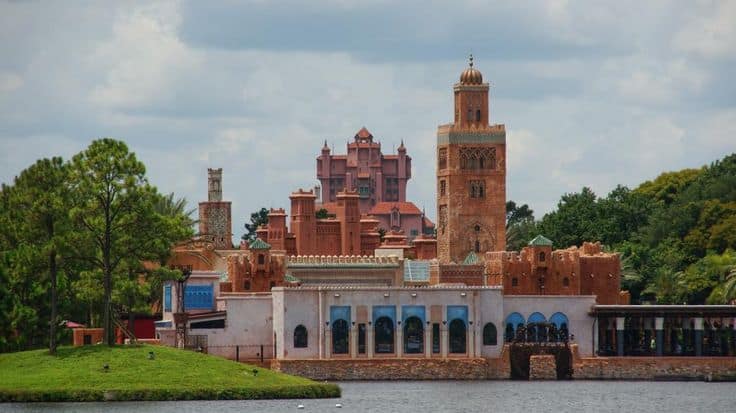
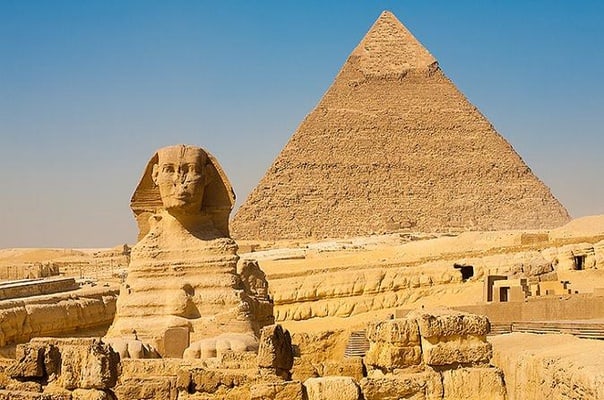

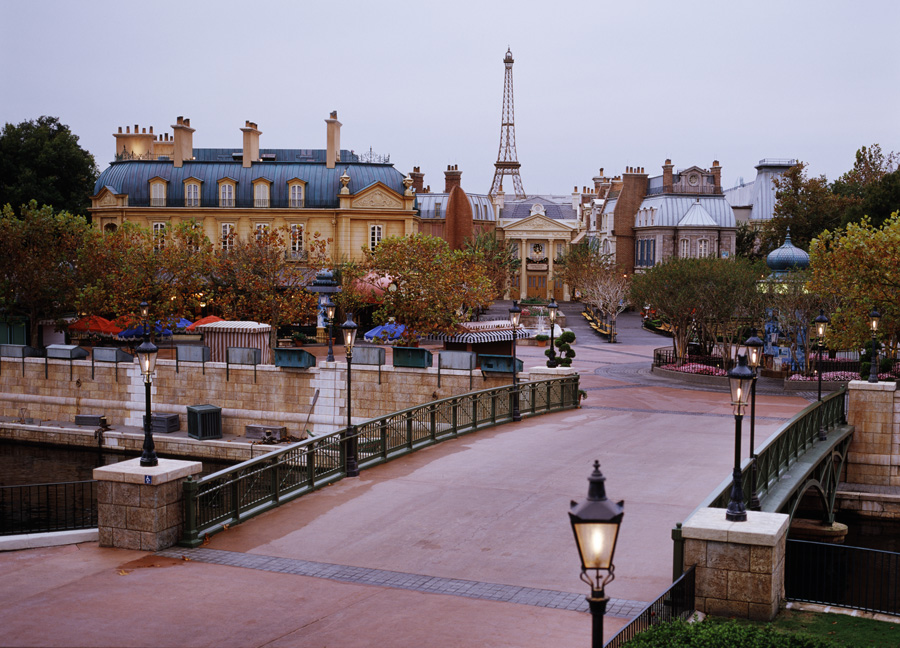


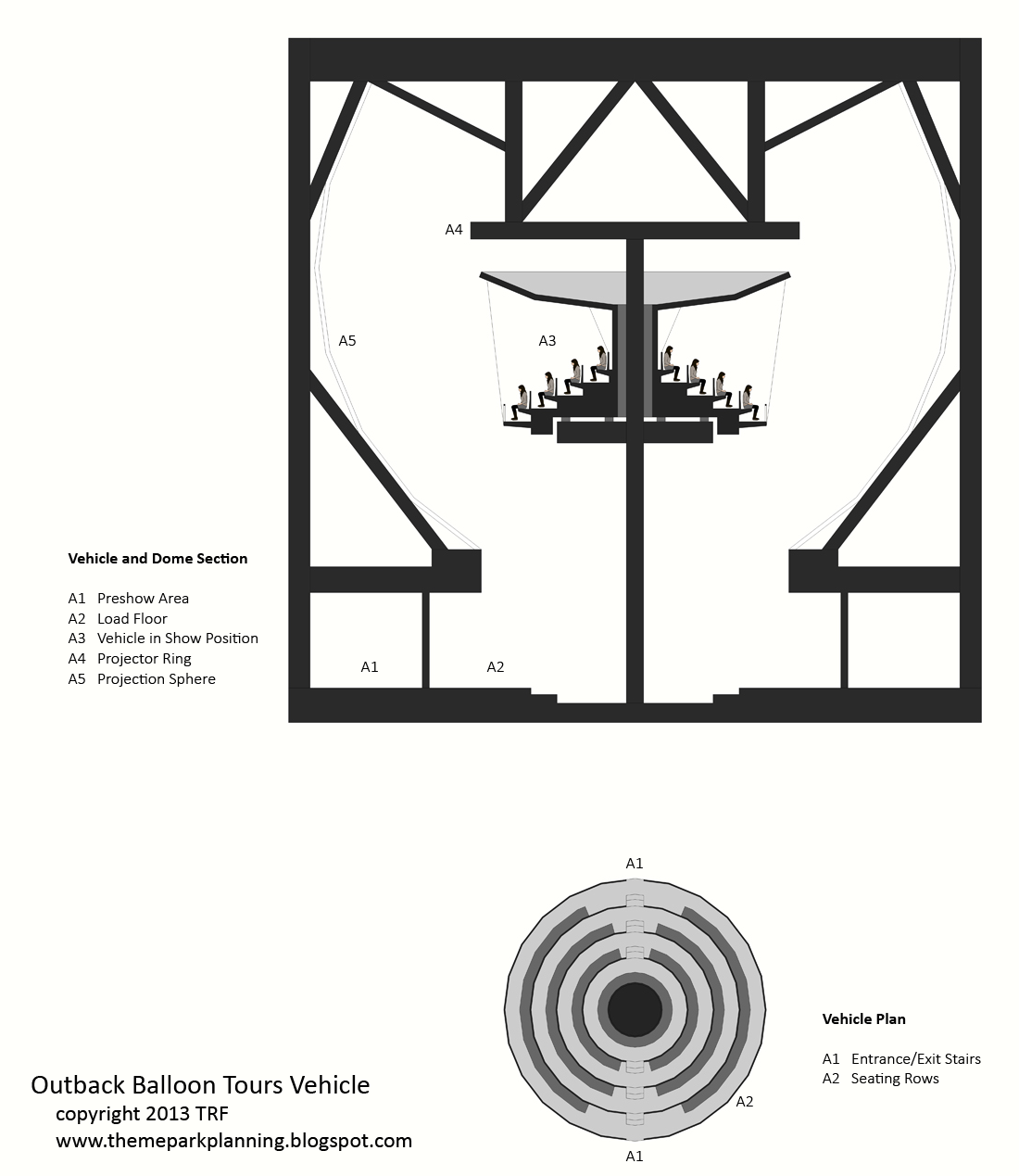

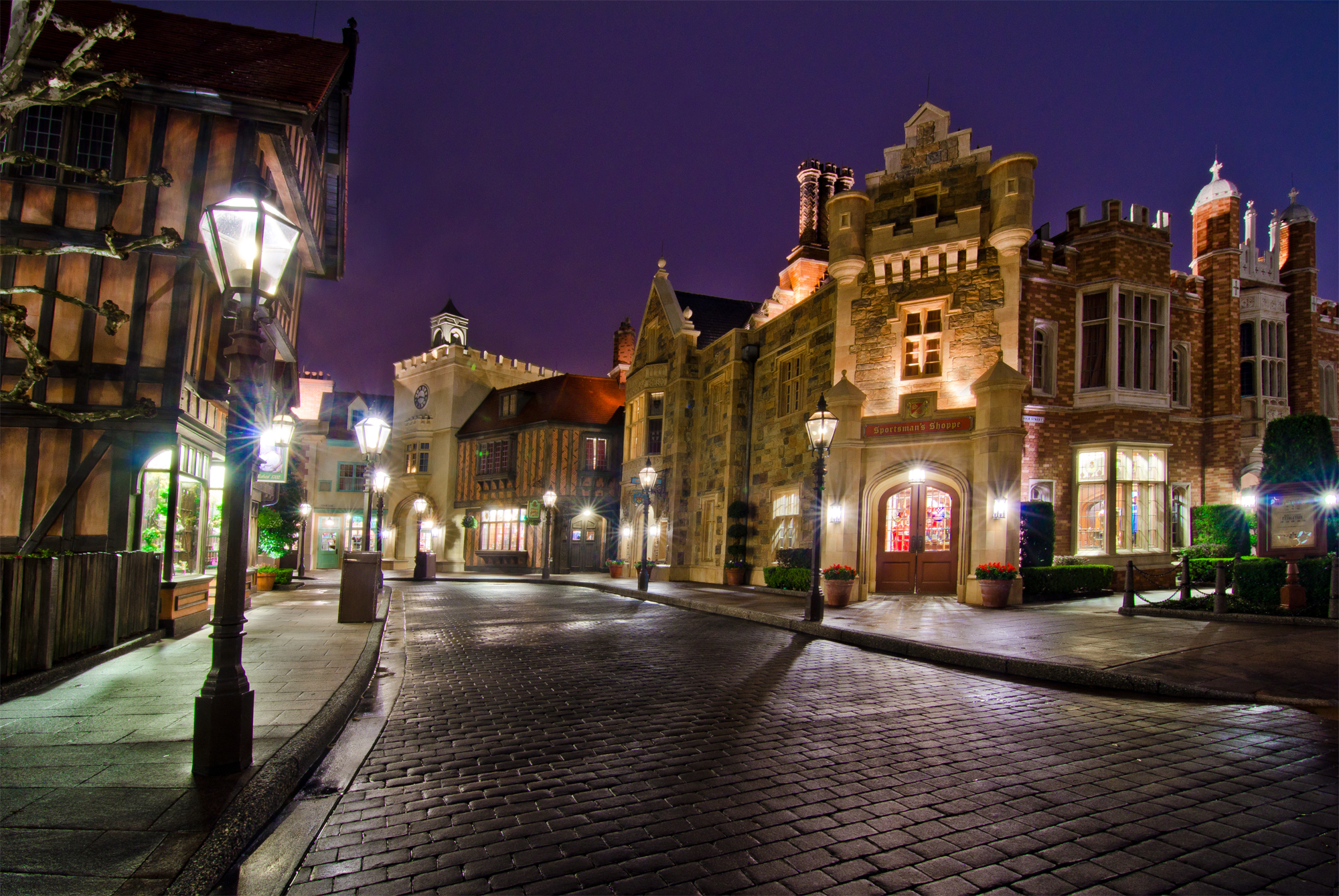
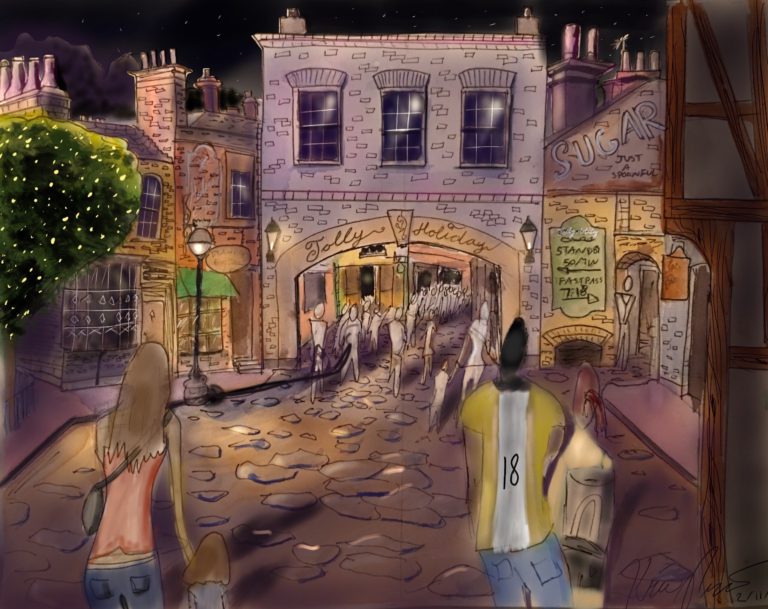
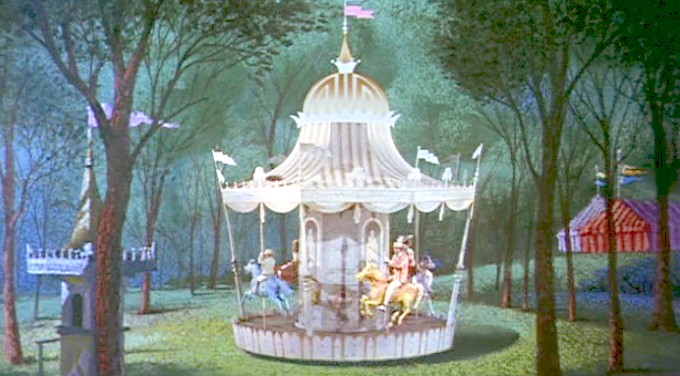



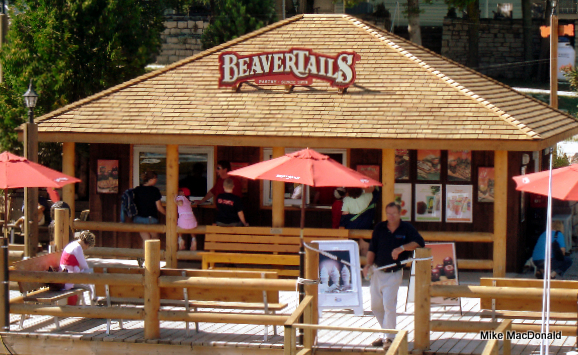
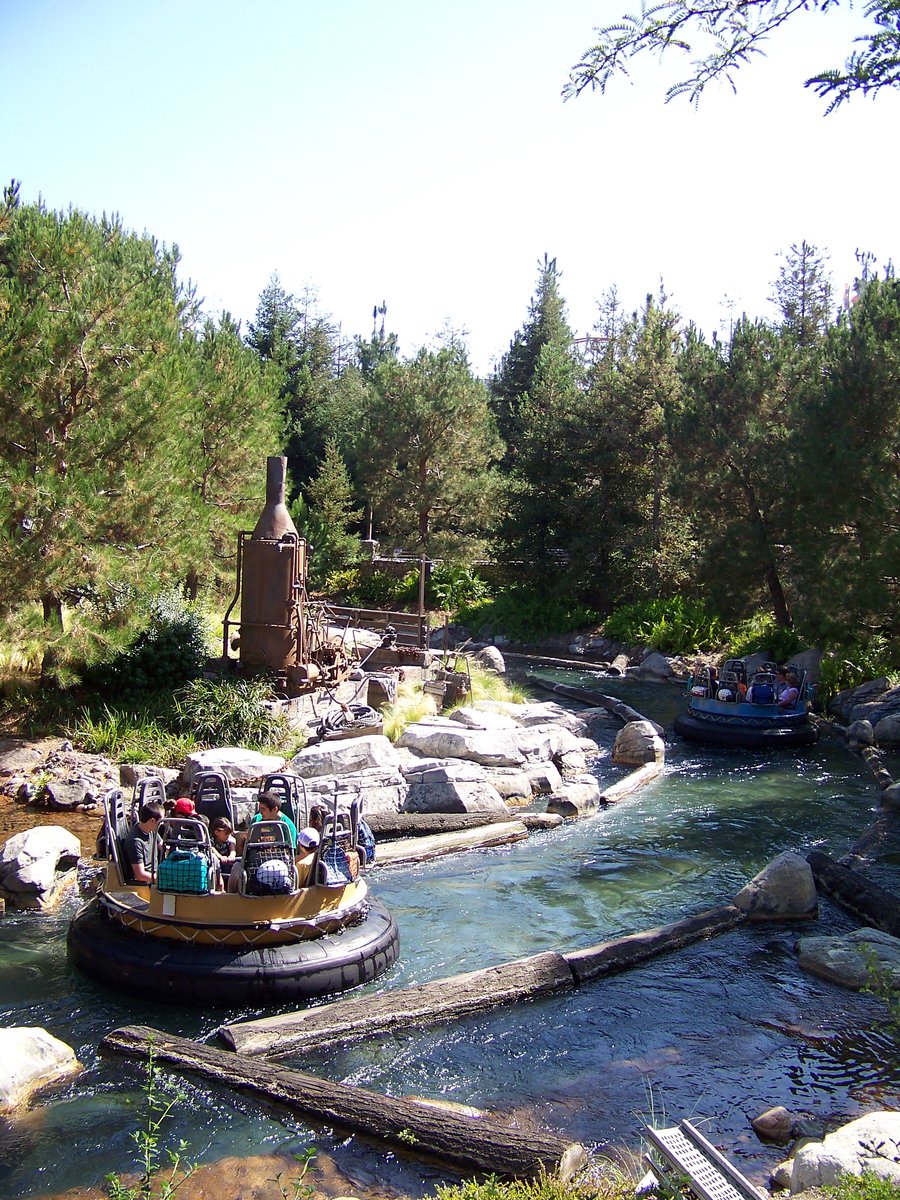
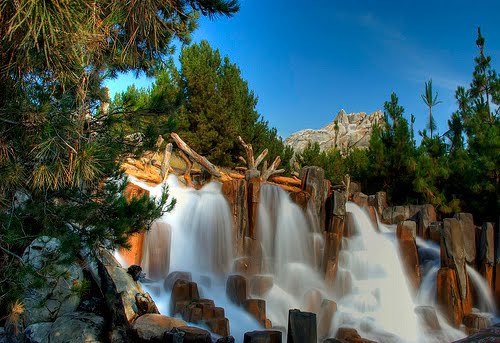
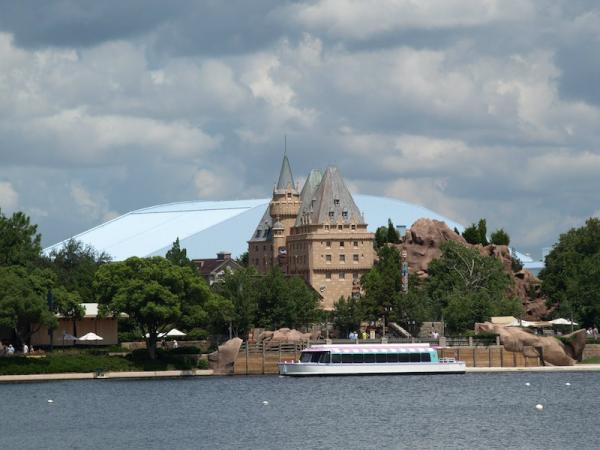

/cdn.vox-cdn.com/uploads/chorus_image/image/44274110/big-hero-6.0.0.jpg)



